The Tombs of the Kings
Let’s start by acknowledging that “Tombs of the Kings” is a misnomer. There were no actual kings buried here (with a possible exception in Tomb 8, see below). The name derives from their monumental aspect and the magnificence of their architecture. The tombs are burial monuments entirely hewn out of the rock and are included in the most important works of ancient times that have been saved. They are among the few monuments of Hellenistic architecture that can be seen in Pafos. It is thought that the part of the necropolis that holds the eight tombs (the northern part) was used for burials of rich people and perhaps for burials of the Ptolemaic state’s dignitaries that served in Pafos.
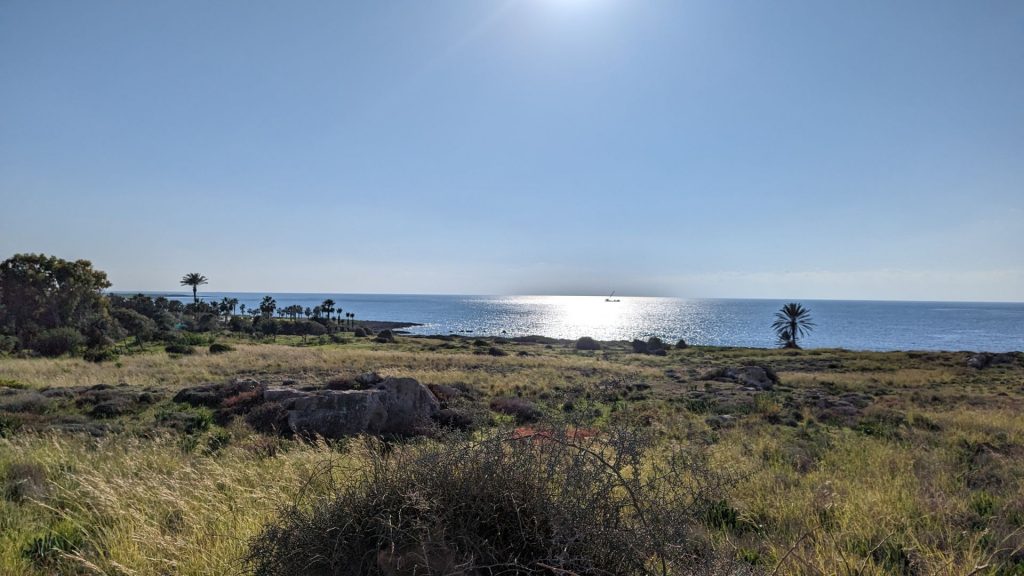
The most ancient tombs were created at the end of the 4th century B.C. The most imposing were made towards the 3rd century B.C., when the richer families developed. Then the region filled with tombs and the remainder of the burials were spread everywhere. This site continued to be used as a cemetery but for the poorer who were reusing the site.
Before we visit the tombs, here is a brief description of the burial customs in ancient Greece that were observed in this cemetery of the Hellenistic period. First, the relatives of the deceased covered the body with oil, then a linen cloth. The deceased was publicly exposed, at which time lamentations started and relatives visited the dead for the last time. Following that, a silent procession through the streets of the city took place, ending at the cemetery for the burial. The burial was followed by perideipno, a dinner to honor the dead, during which the relatives ate at the tomb. Excavators have found offerings such as the amphorae (a tall ancient Greek or Roman jar with two handles and a narrow neck) in the tomb. The amphorae were probably used for libations of wine and olive oil, as offerings to the dead. Gold jewels have also been found. It was believed that the dead would return and claim them.
All in all, this sounds quite familiar, except that we don’t eat the meal after the burial at the tomb – we typically go to a church basement – and we don’t believe the dead will return to claim goods left for them. But we all develop rituals to remember and honor our loved ones who have died and we find comfort and closure in those rituals shared with those who loved the deceased. They are *so* important. Anyone who has attended a funeral knows this.
None of these tombs contains a sarcophagus. It is believed that the dead were transported to this cemetery either in wooden coffins or on a deathbed.
Tomb 1 is half above ground and half underground. There are two small niches for children and five for adults inside. It has the remains of colorful plaster which once covered the entire surface of the tomb. It was used to protect the stone and also to decorate the interior to make it appear richer. This is found in other tombs as well.
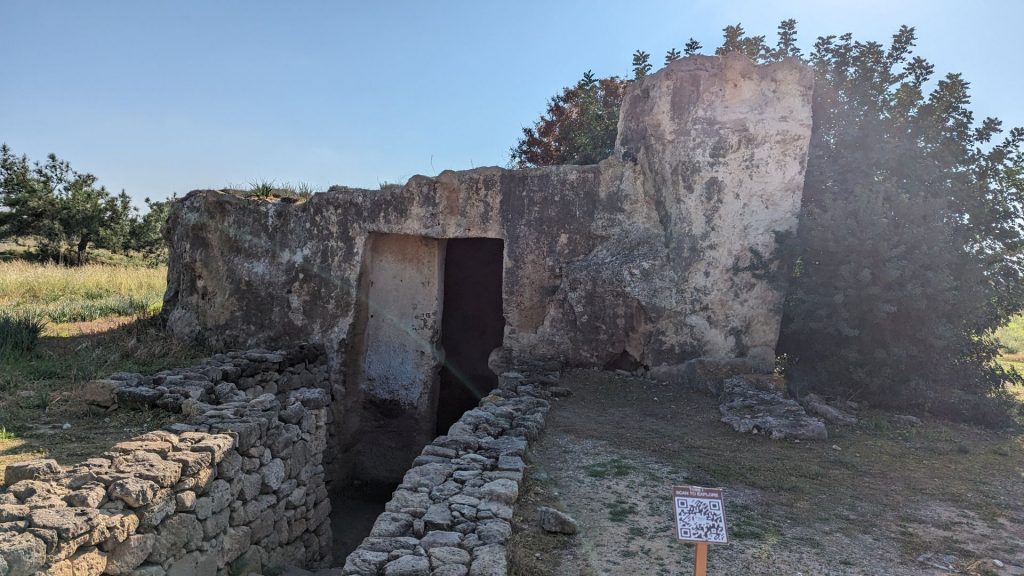
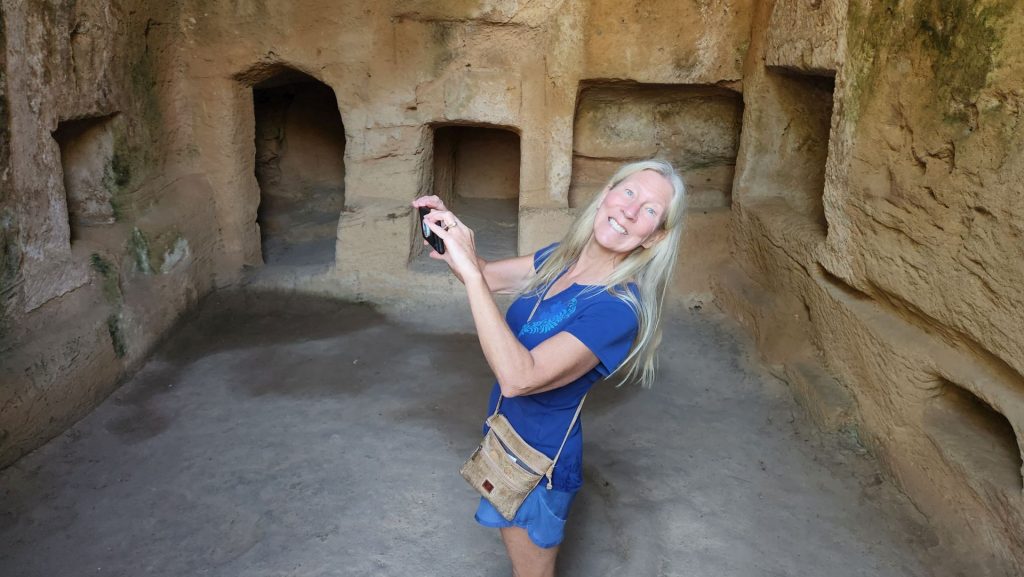
Tomb 2 is accessed via a stepped dromos. Dromos is the term for the stone staircase that leads into the interior of the tomb. They come in various shapes and sizes, but nearly every tomb has them (some have more than one) and I thought they were all in pretty good shape. Tomb 2 contains both niches and shaft tombs.
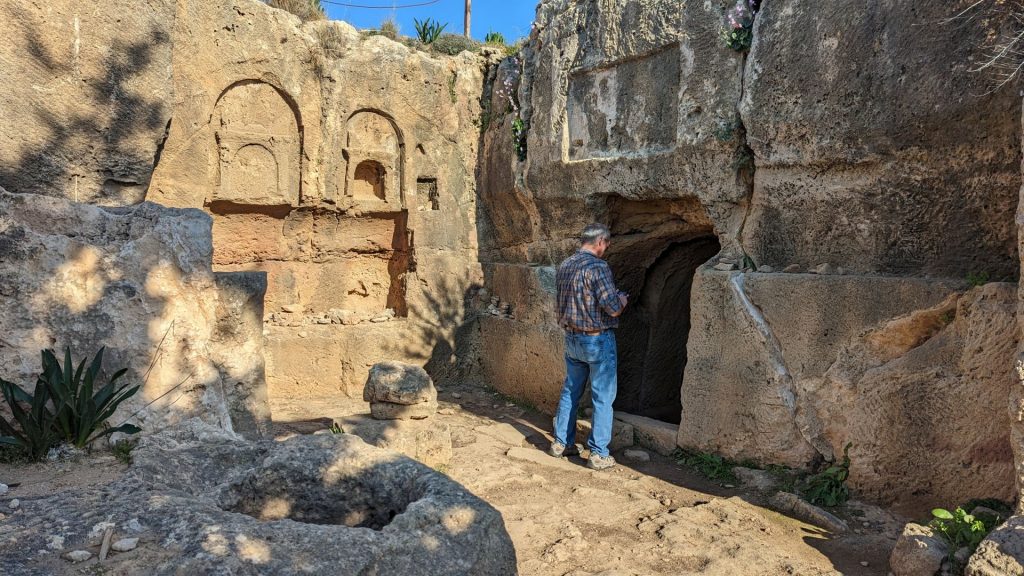
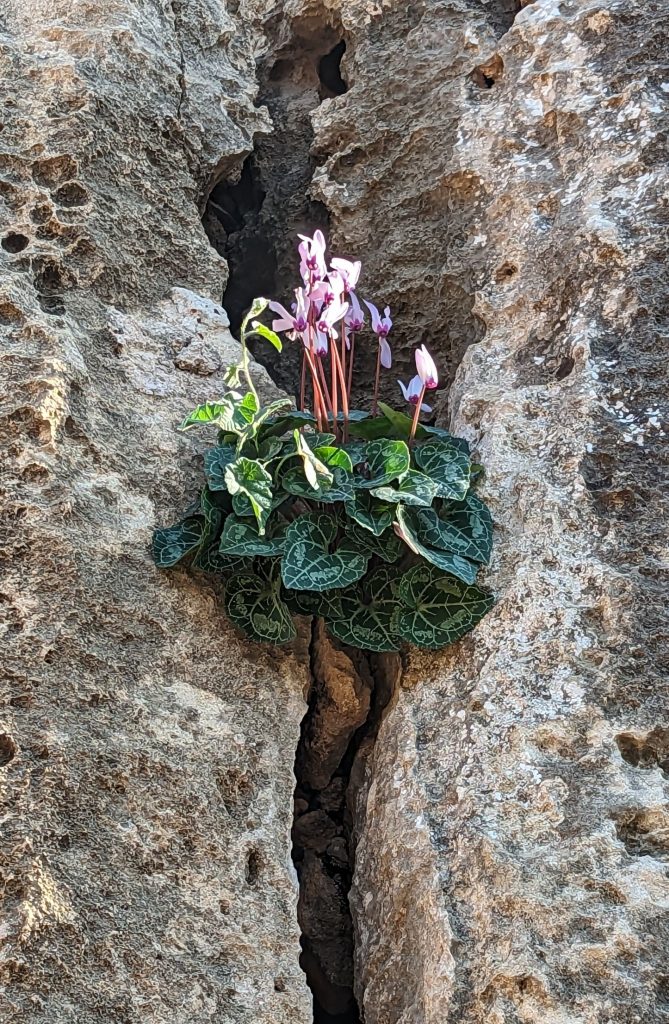
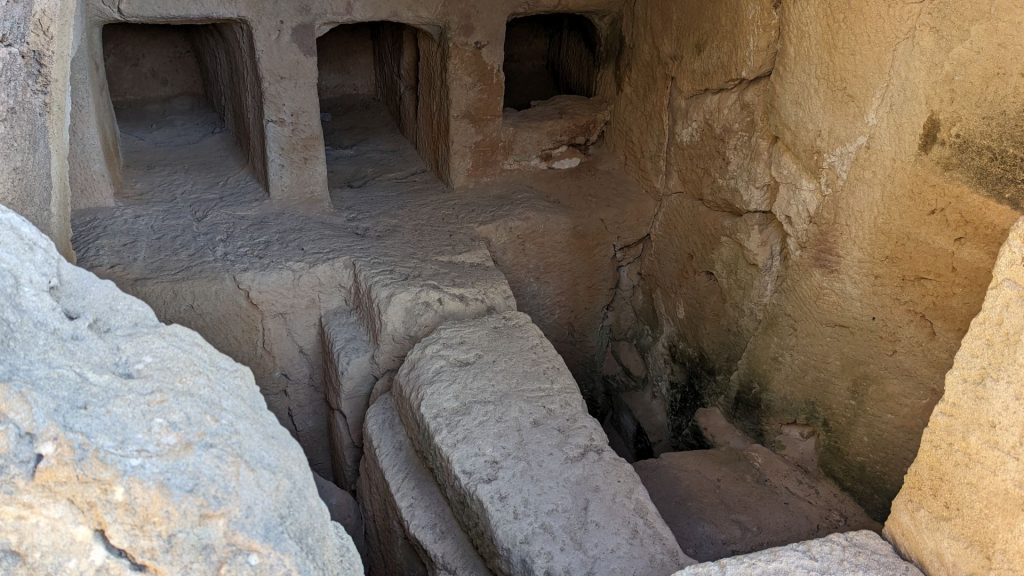
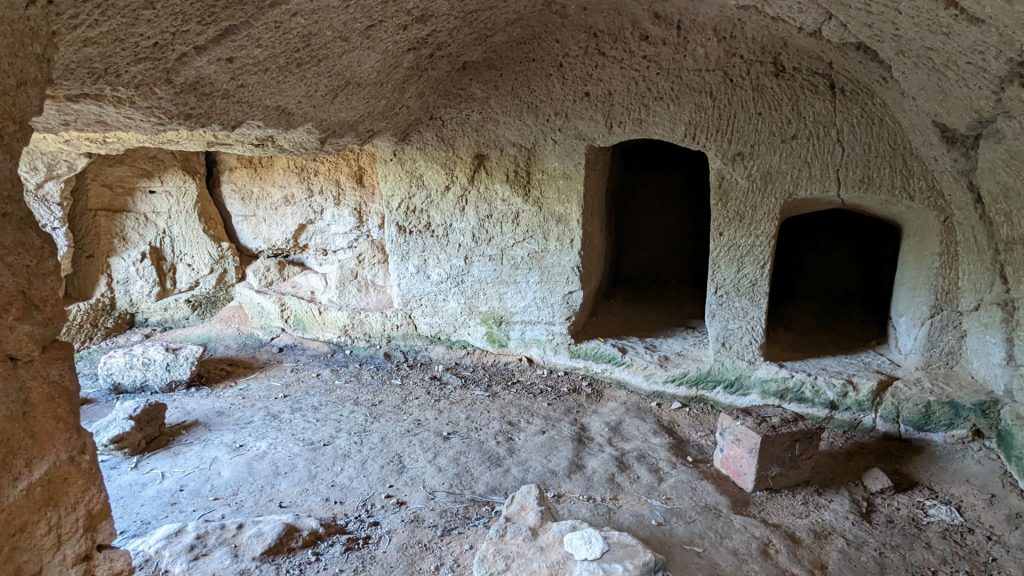
Tomb 3 is of Dorian style. The Doric order originated in the Doric region of Greece and is the earliest and simplest order, though it might have complex details in the entablature above. As you can see, the columns (which have been restored) are baseless and the capitals (the topmost part) of the columns are frugal. Above the columns are triglyphs and metopes (the latter is the flat surface between the triglyphs).
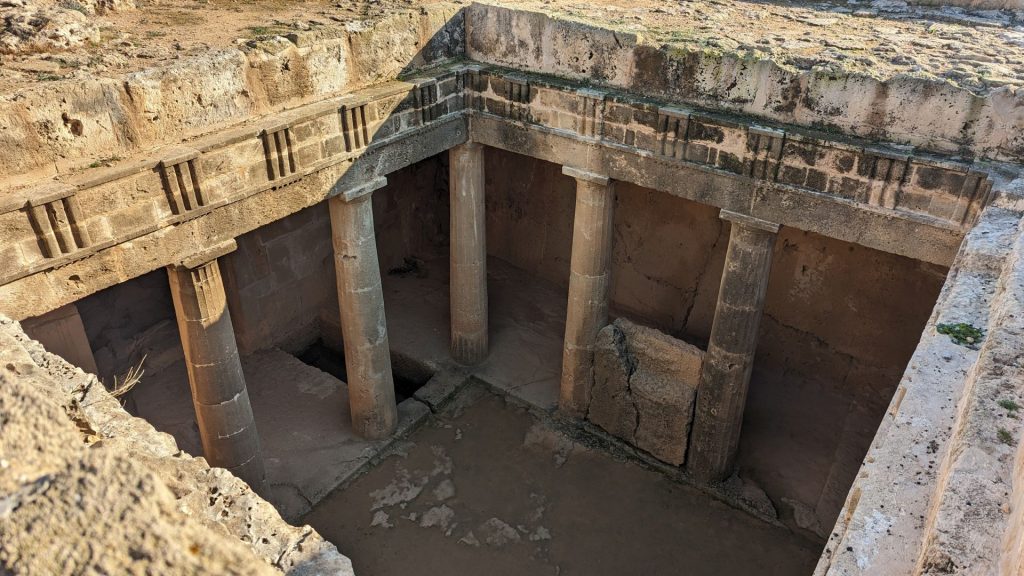
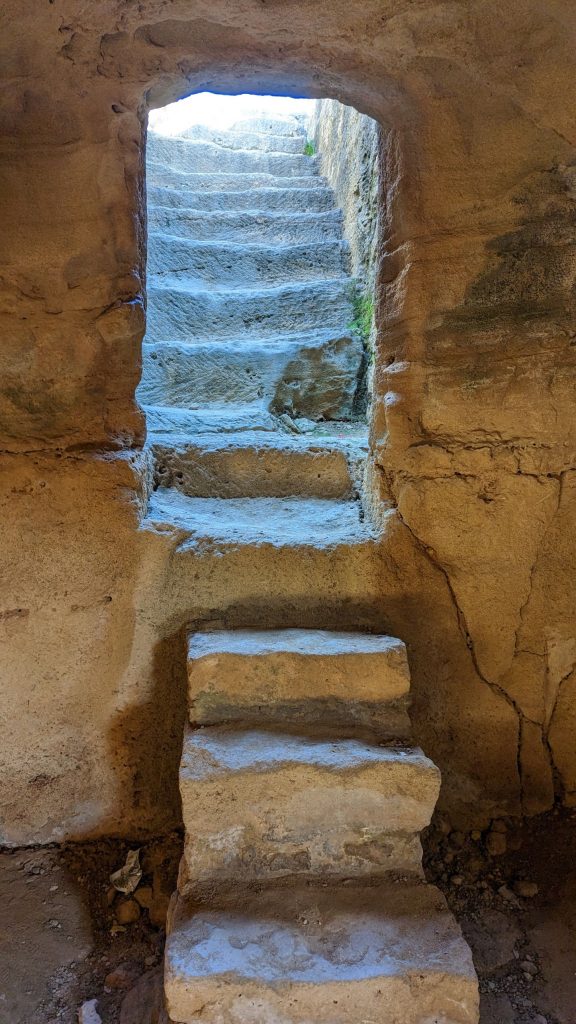
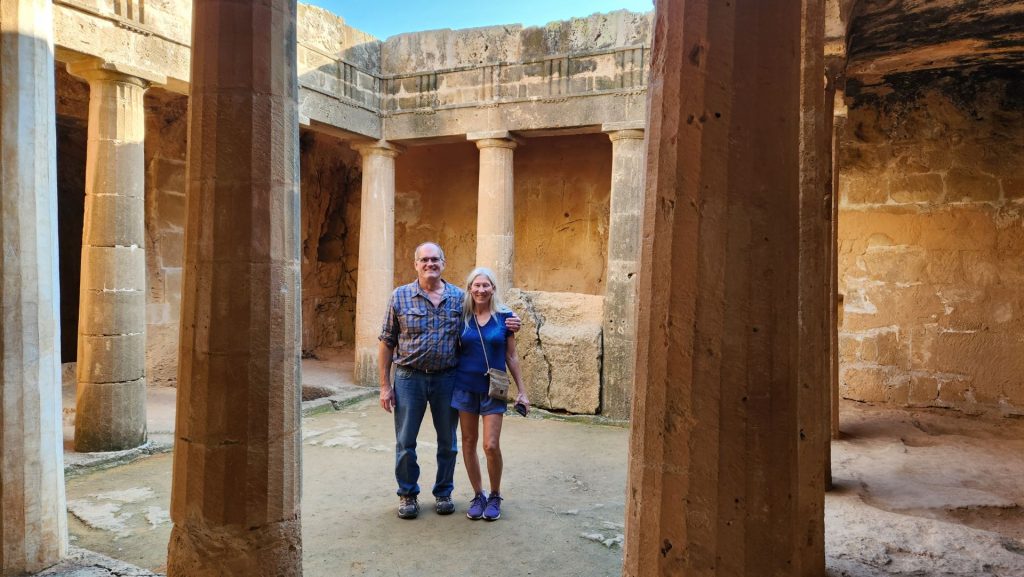
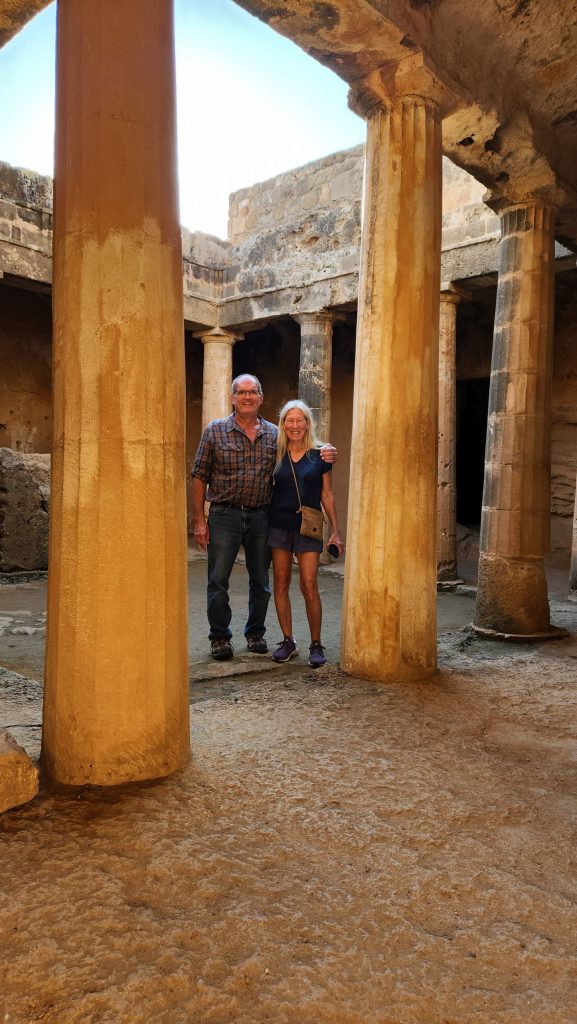
There is a well at the bottom of the stairs. (I should note that every tomb had a well.) The well has a ritual and symbolic purpose. The ritual purpose was for the burial attendants to wash before leaving the tomb. (This custom continues to this day in Cyprus, for burials in the Christian orthodox cemeteries.) The water also functions as a means of purification. As for the symbolic purpose, the water in the well allows the dead to pass from the upper world to the underworld. This harkens back to the Greek myth that the soul-transmitting god Hermes delivered the souls of dead people to Charon so as to be led to the kingdom of Hades, god of the underworld. The dead passed to the underworld through the River Acheron (i.e., water).
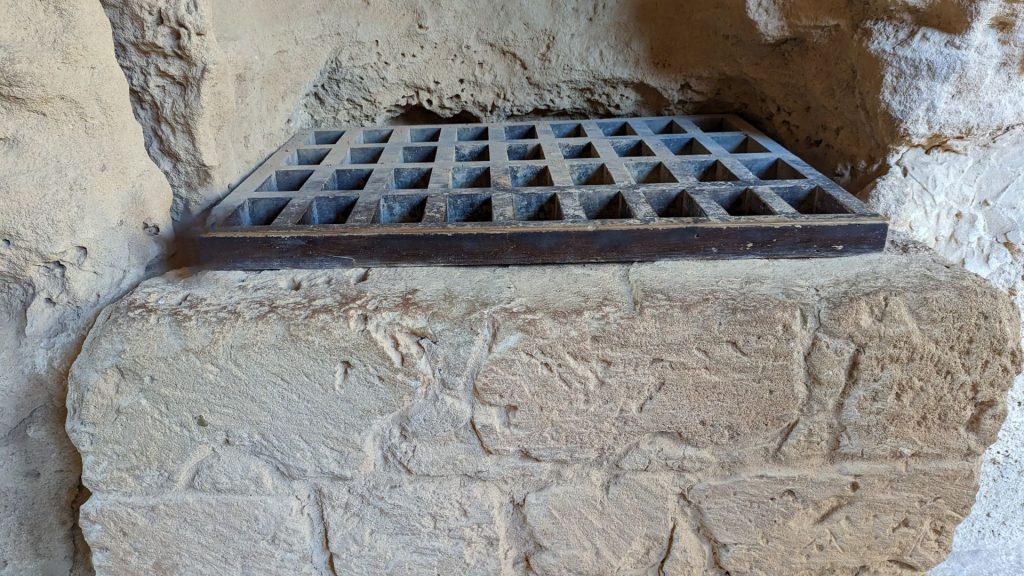
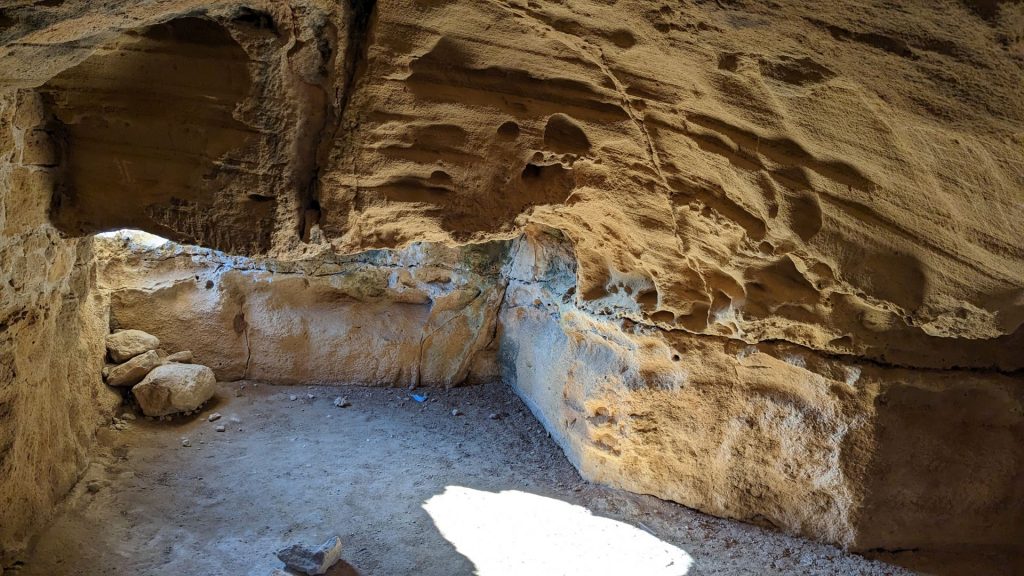
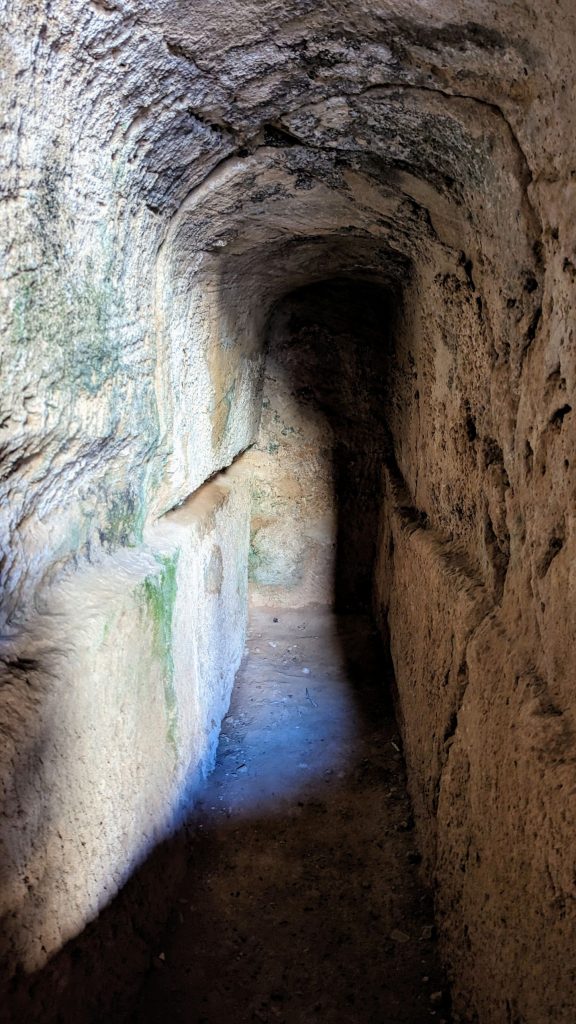
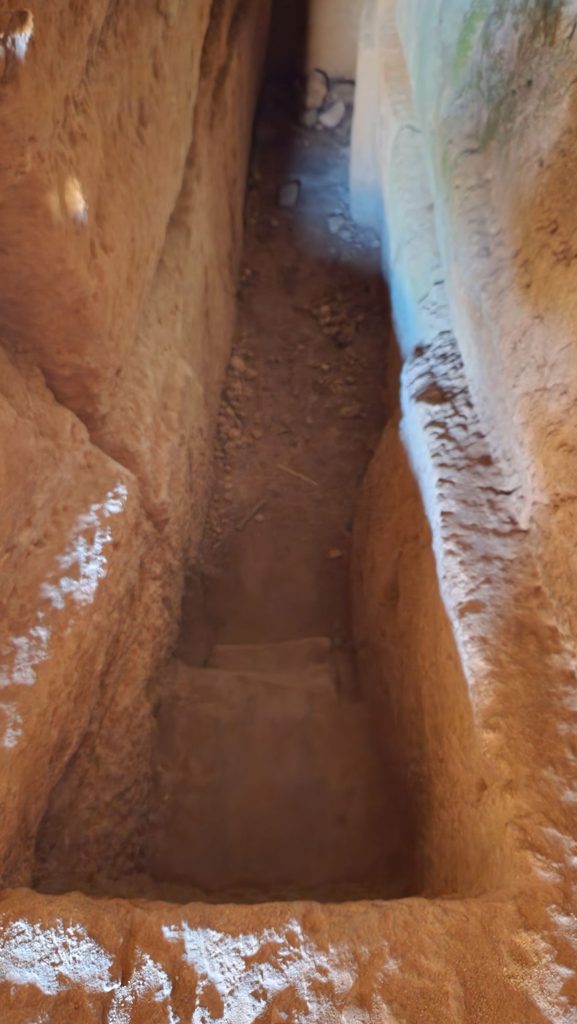
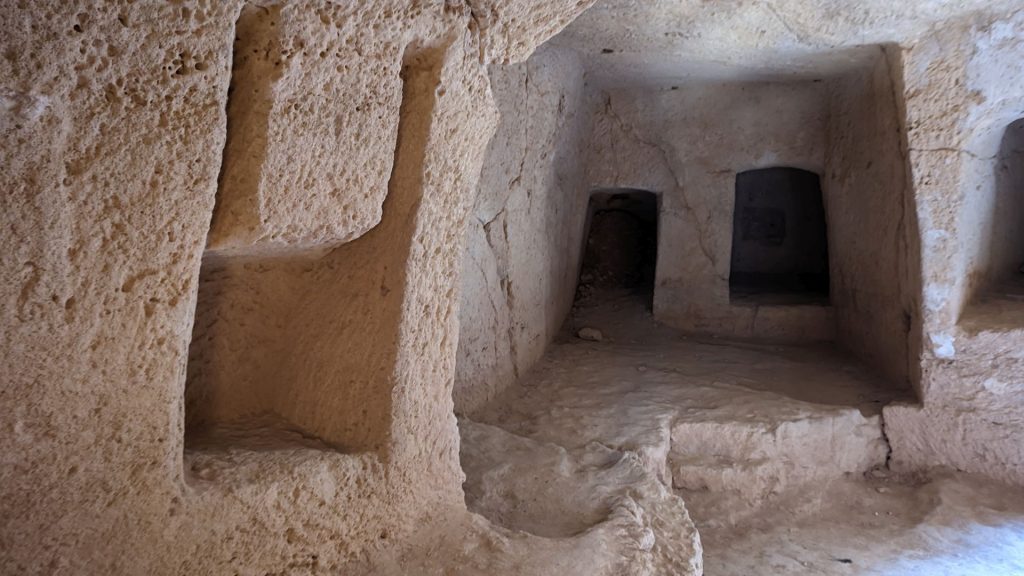
A second burial niche in Tomb 3 can be accessed through a hole that was opened by tomb raiders. That is the route we took.
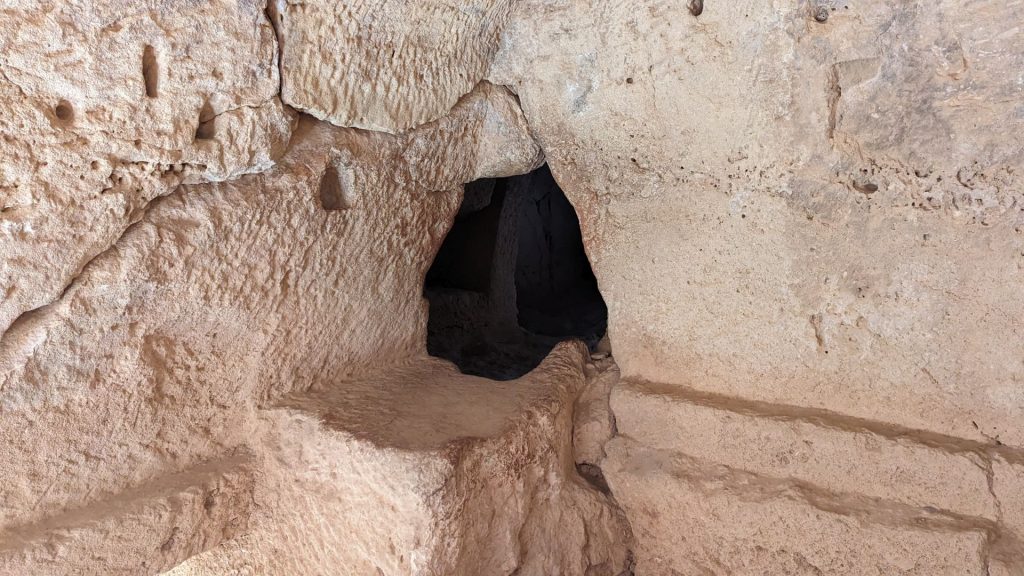
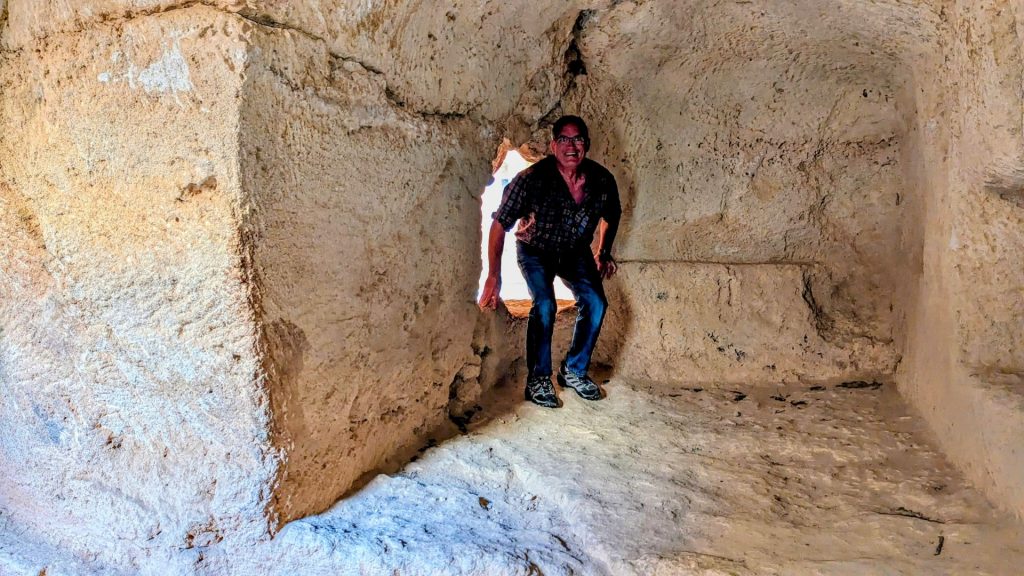
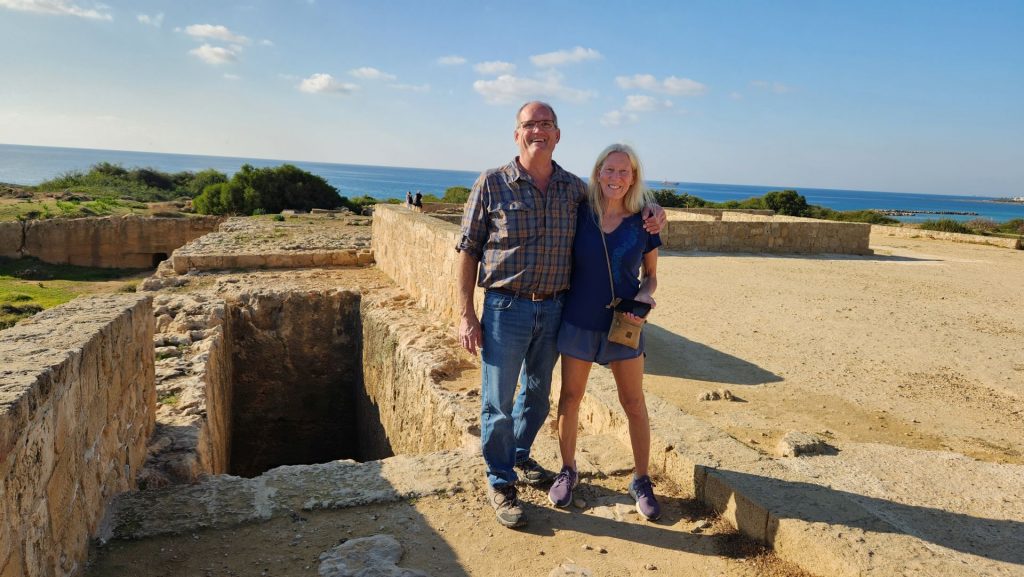
It was a beautiful, warm day. You would never catch us dressed this way in January in Minnesota.
Tomb 4 also has a Dorian peristyle. In this case, the western portico is supported by square pillars instead of the columns along the other three porticoes. Why? I do not know. Maybe to shake things up a bit. But the reason tombs were built this way at all – with the peristyle atrium – was to resemble the structure of residences. The tomb was considered the residence of the dead, so . . . .
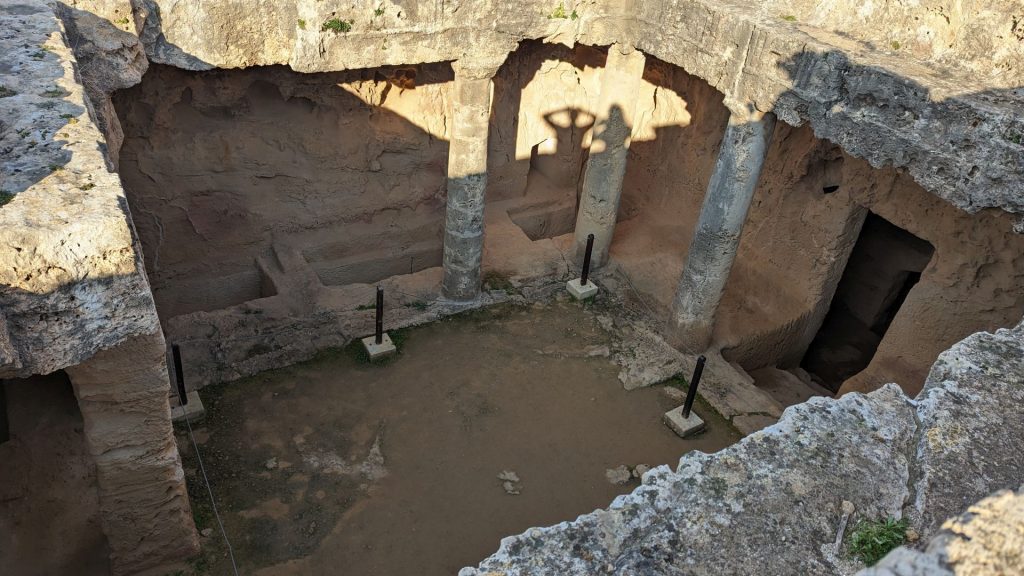
The stepped dromos for this tomb has 13 steps. This tomb has both niches and shaft tombs. One big tomb has a large burial chamber with ten niches and a child’s tomb on the floor. Some jewels were found in this tomb when it was excavated. (You have probably figured out by now that there are tombs within the “numbered/main” tomb.) This tomb was used only during the Hellenistic period. It is thought that the atrium was possibly covered.
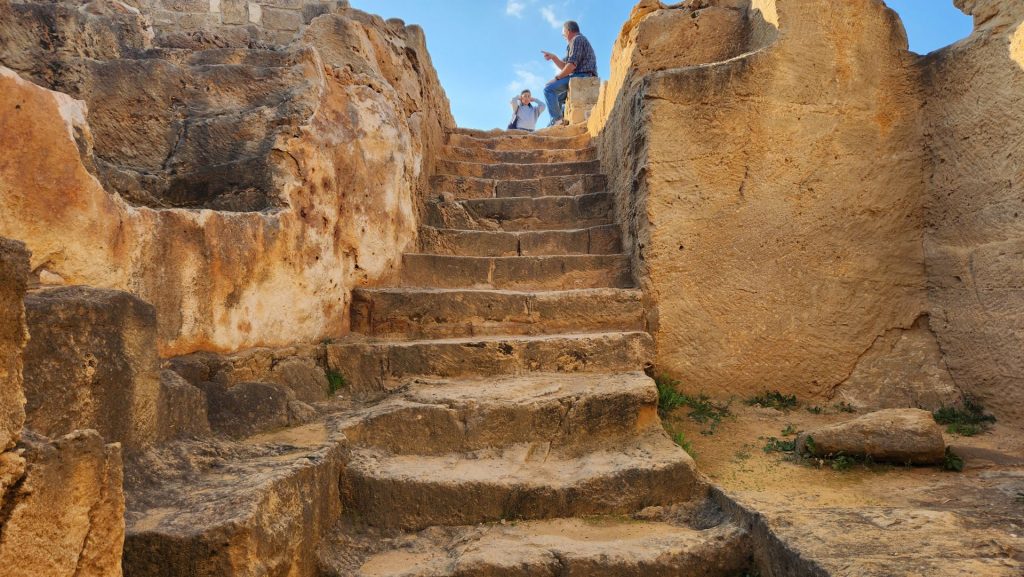
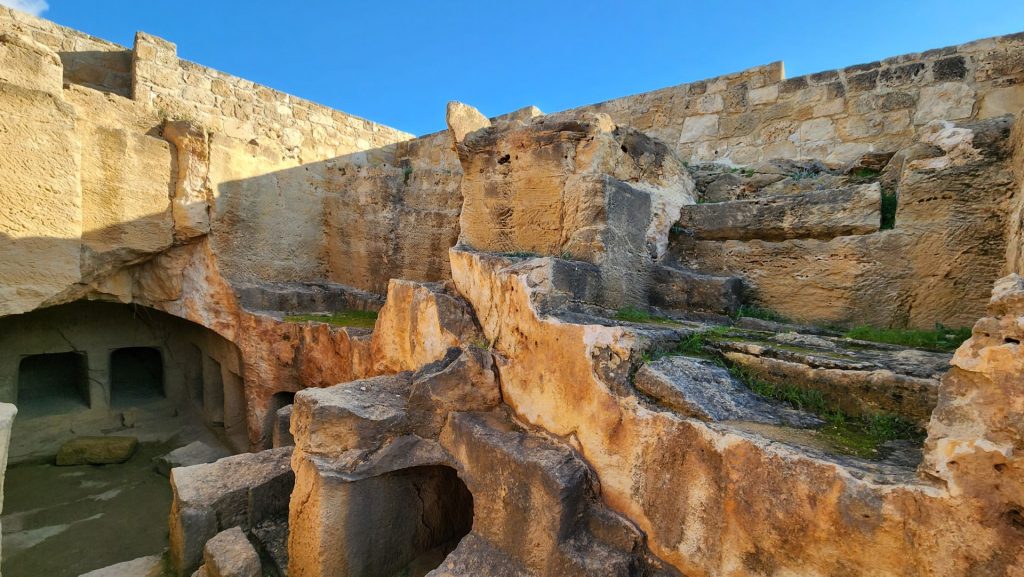
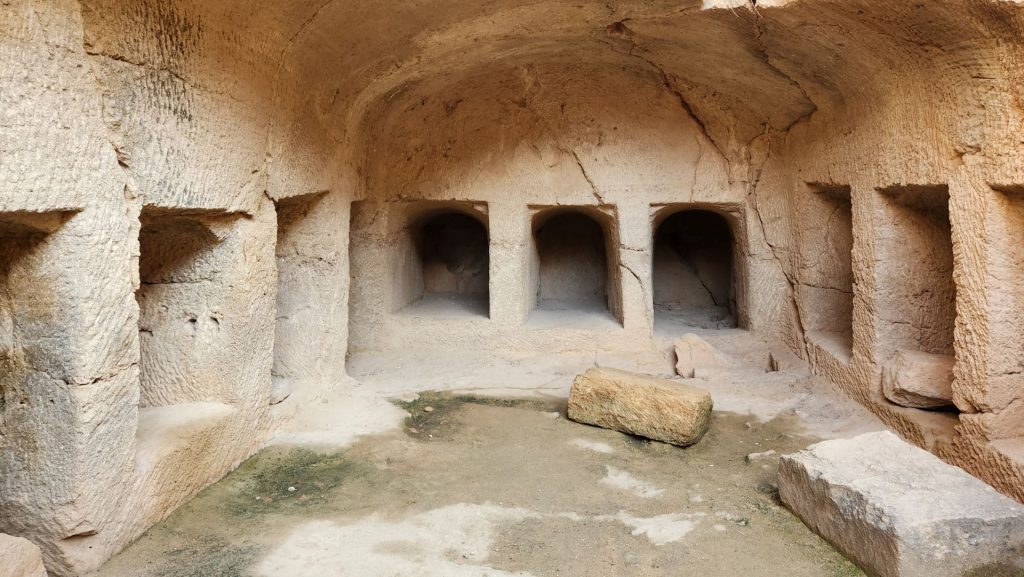
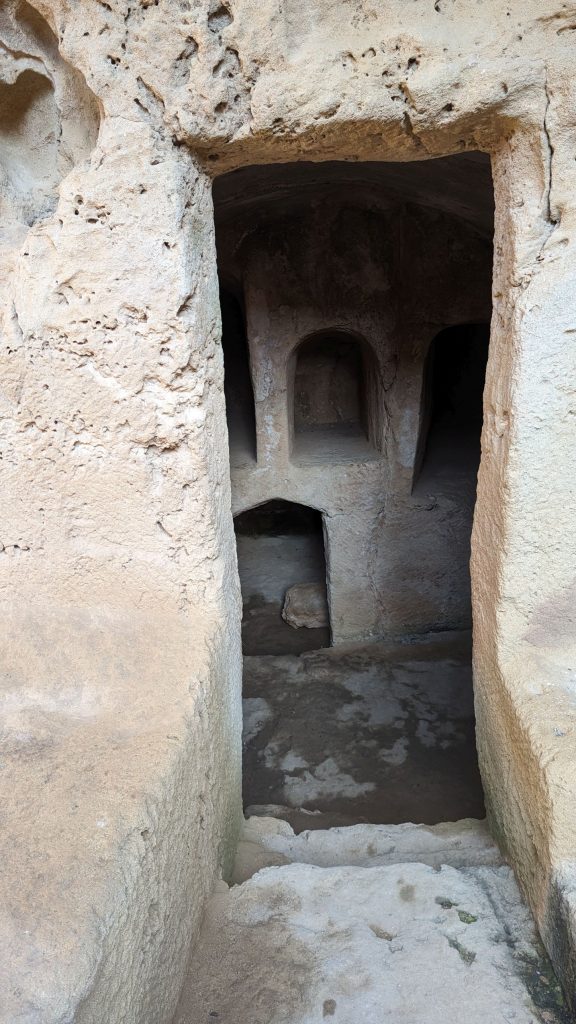
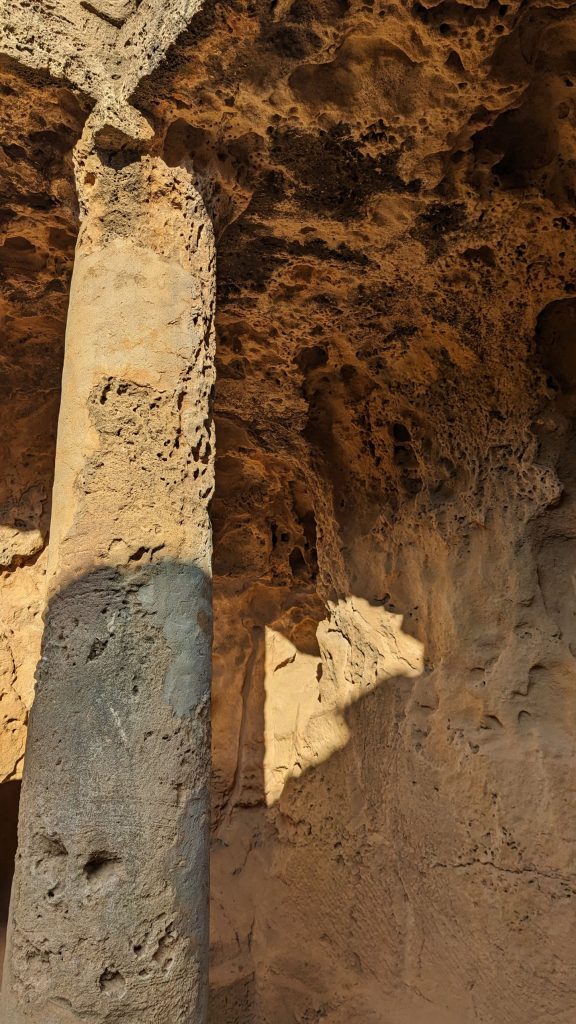
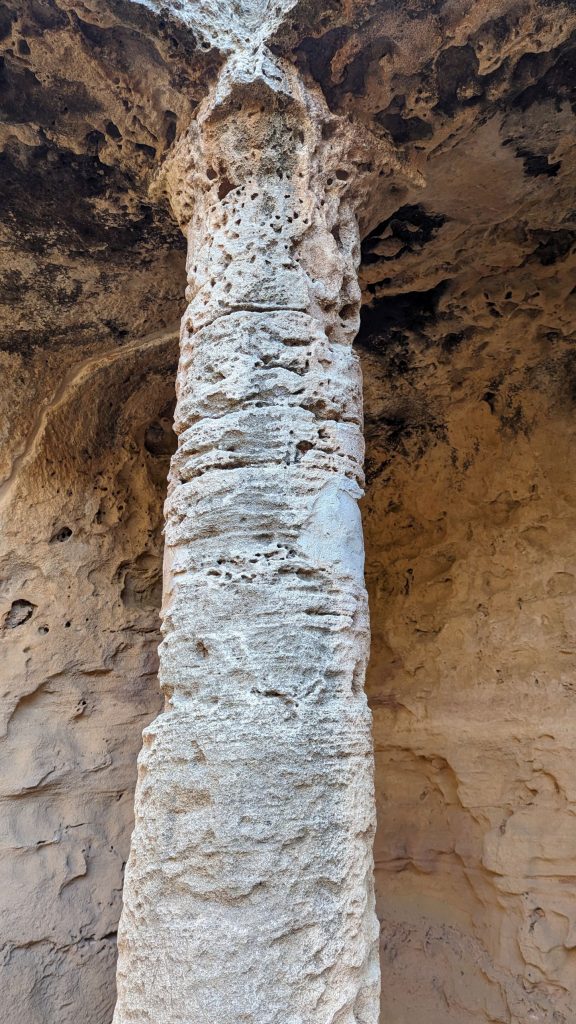
Tomb 5 is the fourth tomb of Dorian style with peristyle atrium, but this atrium is surrounded by 12 pillars instead of columns.
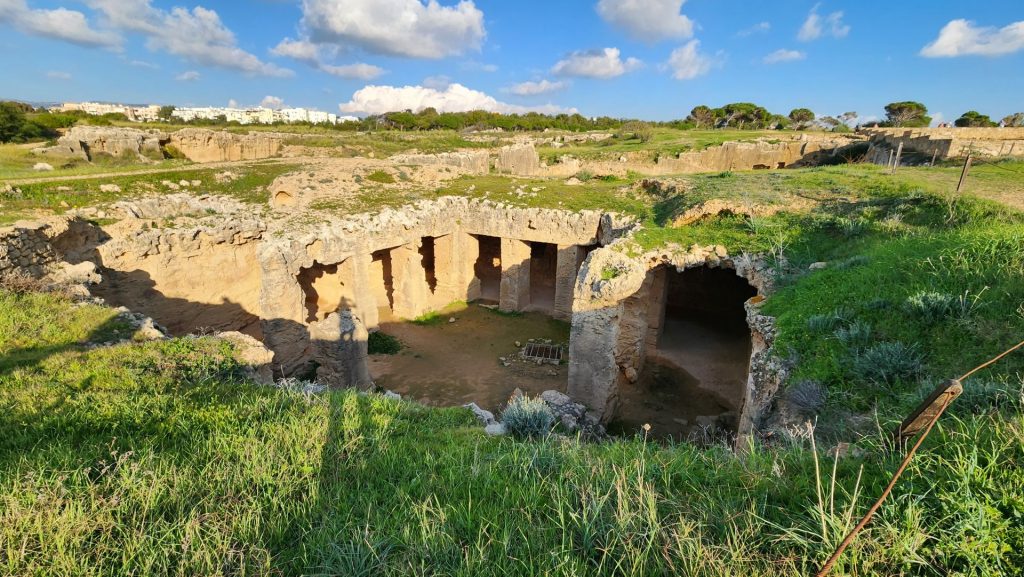
The audio guide referenced a ritual chamber, but I couldn’t figure out where it was. The purpose of it was to hold burial customs: wine and olive libations, offerings to the dead of milk, honey, water, wine, food, and fruit. Maybe this?
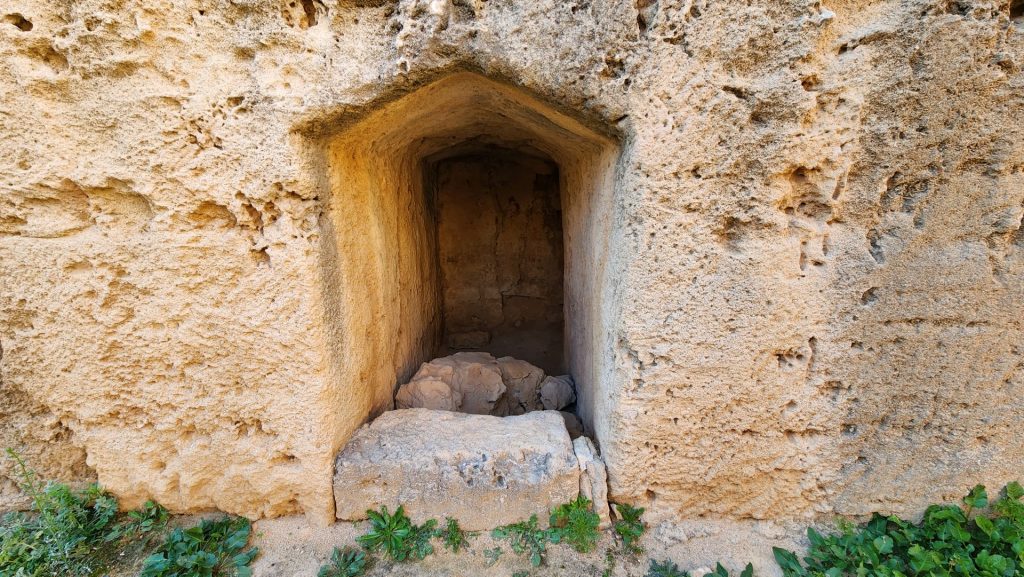
Tomb 5 might have been my favorite. That, or Tomb 8. Does that sound morbid? Maybe. In all of our archeological site visits, I have enjoyed the tombs the most. Well, after the pyramids of Gaza and The Great Sphinx. Totally the tombs after those. Tomb 5 is a huge tomb. It covers a total of 390 square meters and is five meters deep!
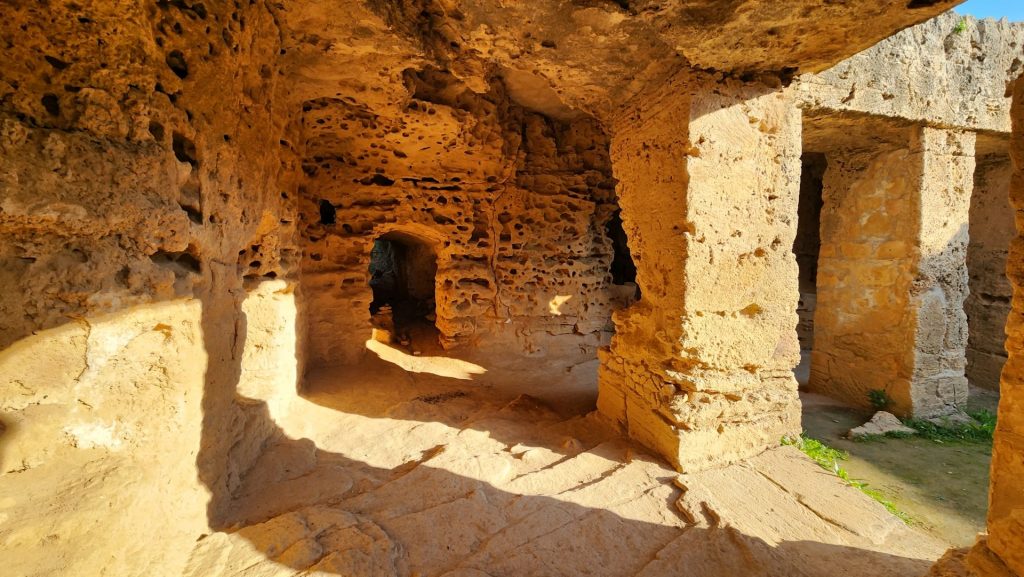
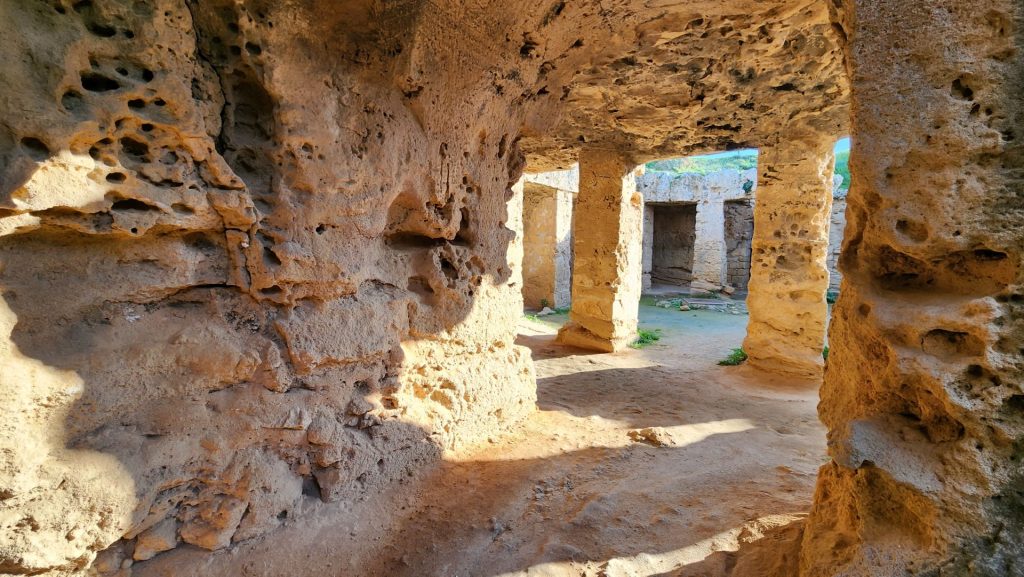
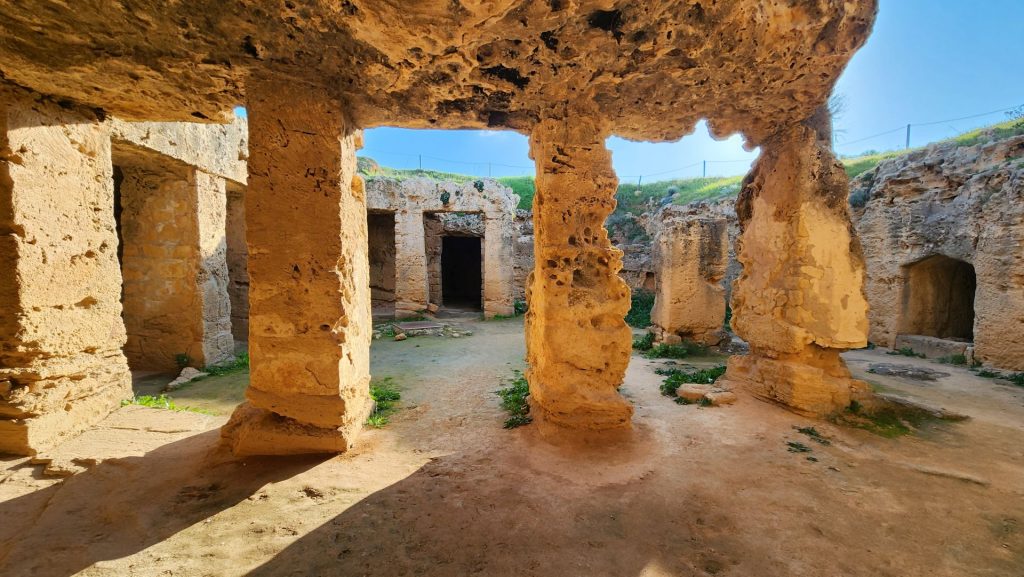
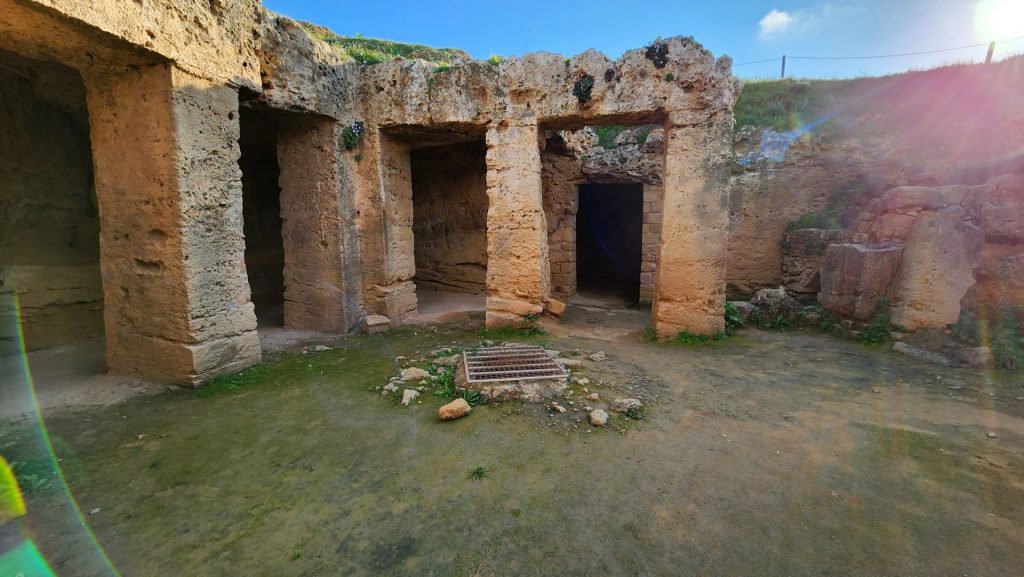
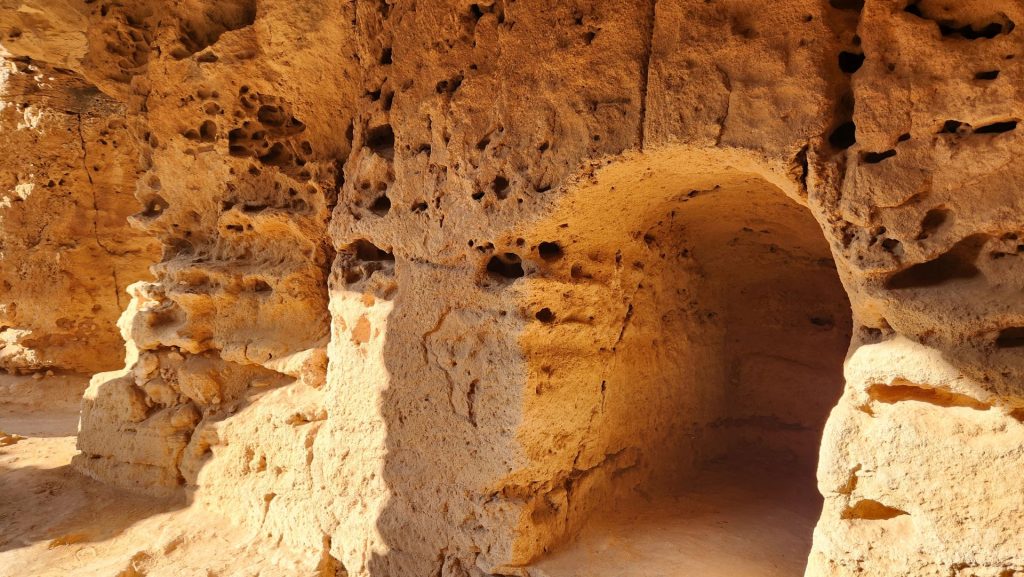
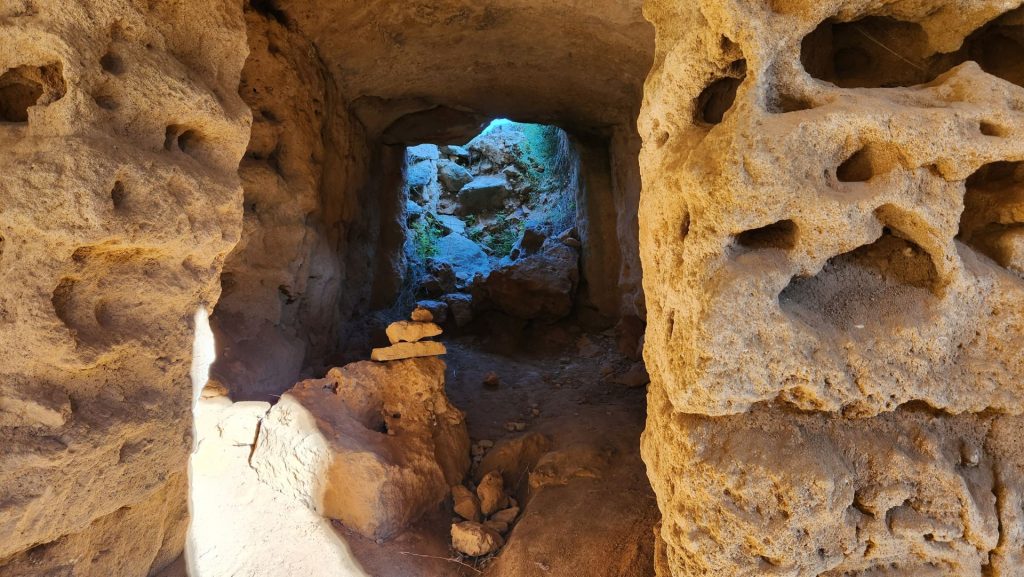
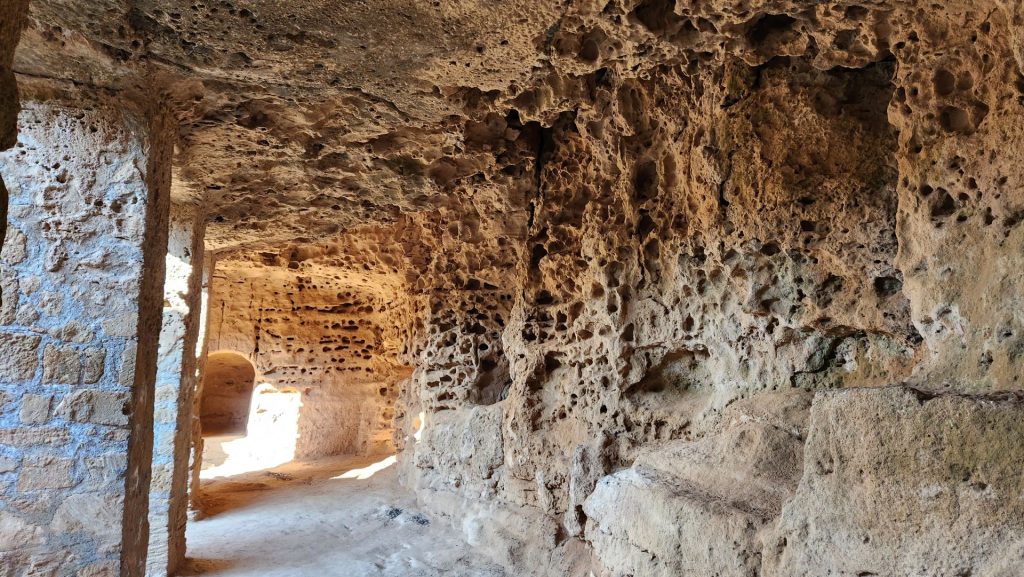
Remember when I wrote that I wasn’t sure what the ritual chamber was but gave it a guess? Well, the same goes for the kiln, which is located in the southwestern corner. I didn’t pay attention to directions when I was taking pictures, but I think this might be it: In any event, the excavators found glazed graffiti ceramic in the kiln, which was characteristic of the medieval times of Cyprus.
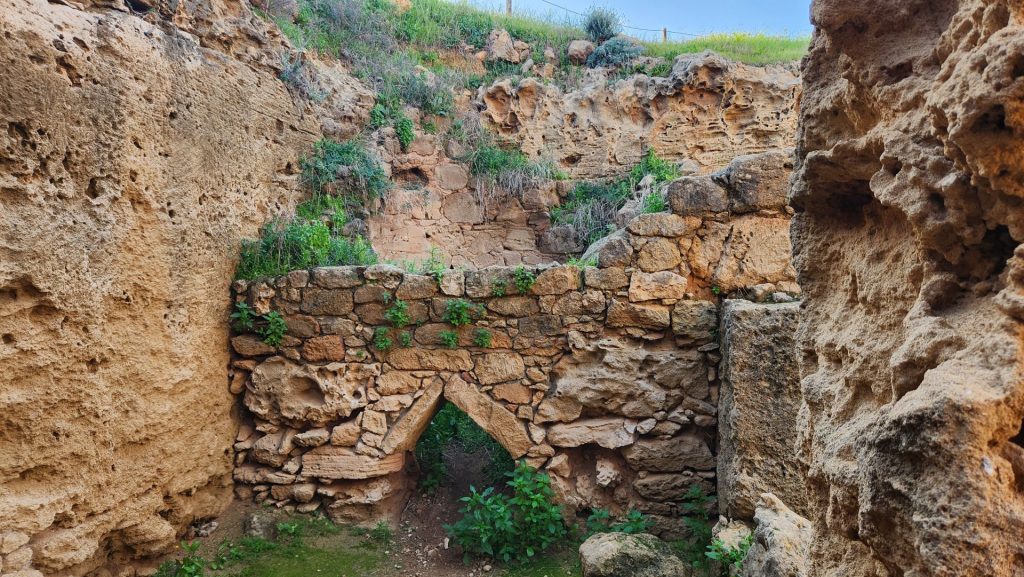
Tomb 6. [We are almost done, there are only eights tombs. Hang in there. Or not! It is up to you, gentle reader. 🙂 ] The dromos for this tomb is the longest ever excavated in Cyprus. The majority of the tomb, approximately 20 meters, is covered by a vault. The tomb apparently contains an offering table but I am not sure where it was. Residues of ashes were discovered which lead archeologists to the conclusion that there were ritual fires where eggs and birds among others were offered to the dead.
Tomb 6 also contains a burial chamber with three niches and a shaft tomb. The niches were covered with a wall with trompe l’œil wooden doors. For those who didn’t know (like me), trompe-l’œil is an artistic term for the highly realistic optical illusion of three-dimensional space and objects on a two-dimensional surface. Trompe l’oeil, tricks the viewer into perceiving painted objects or spaces as real. We did not see this, so I am not sure how they know this.
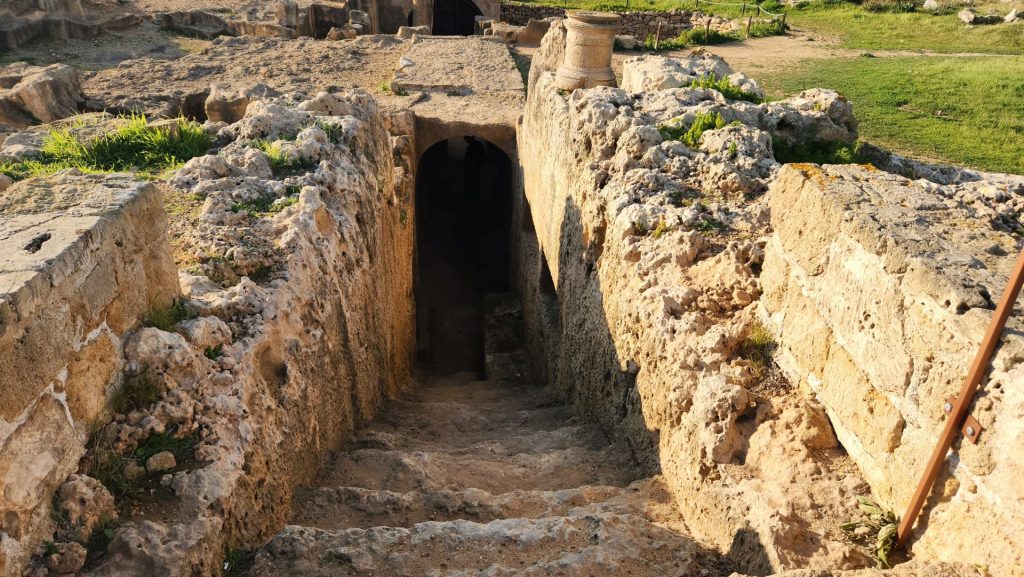
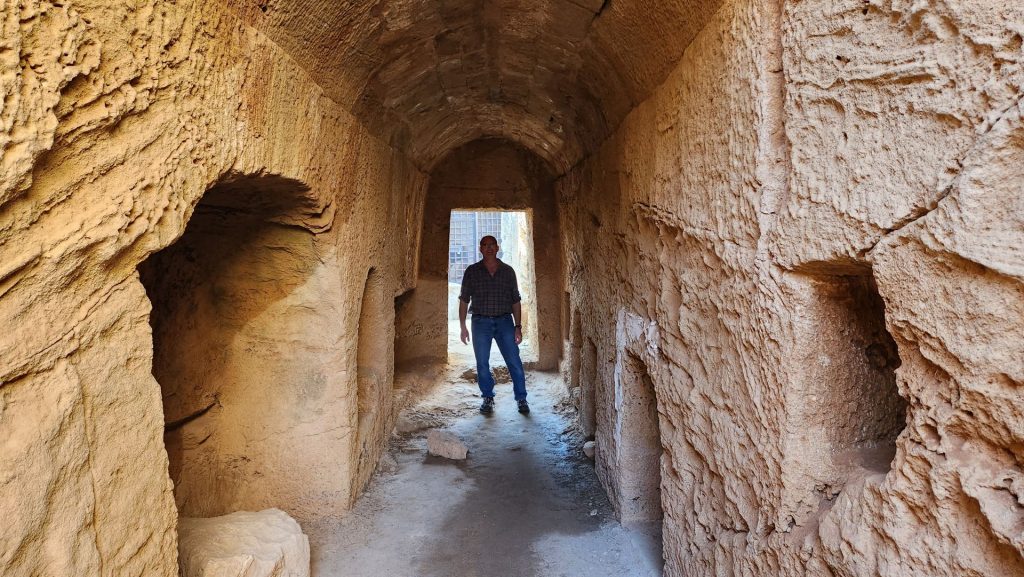
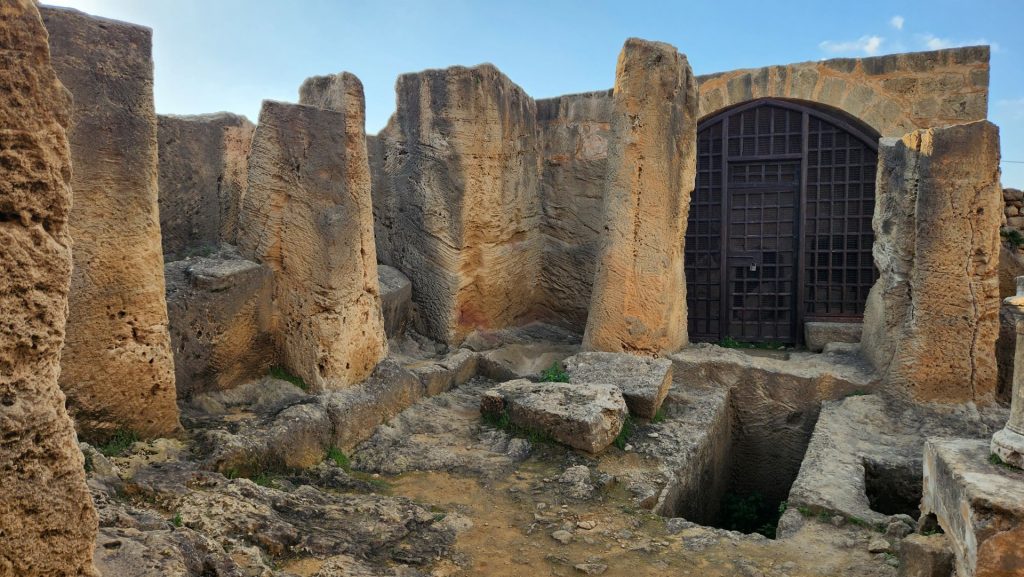
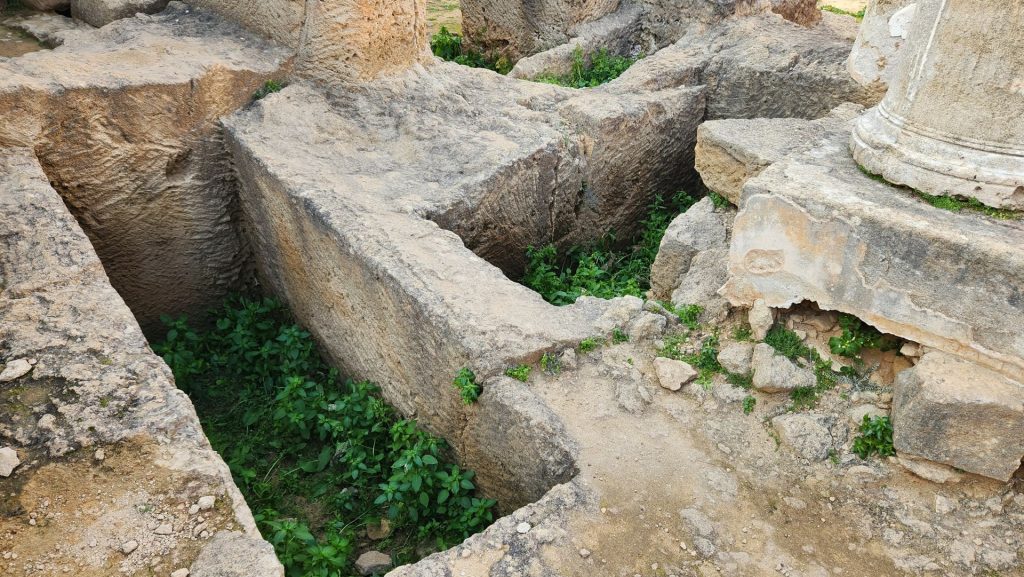
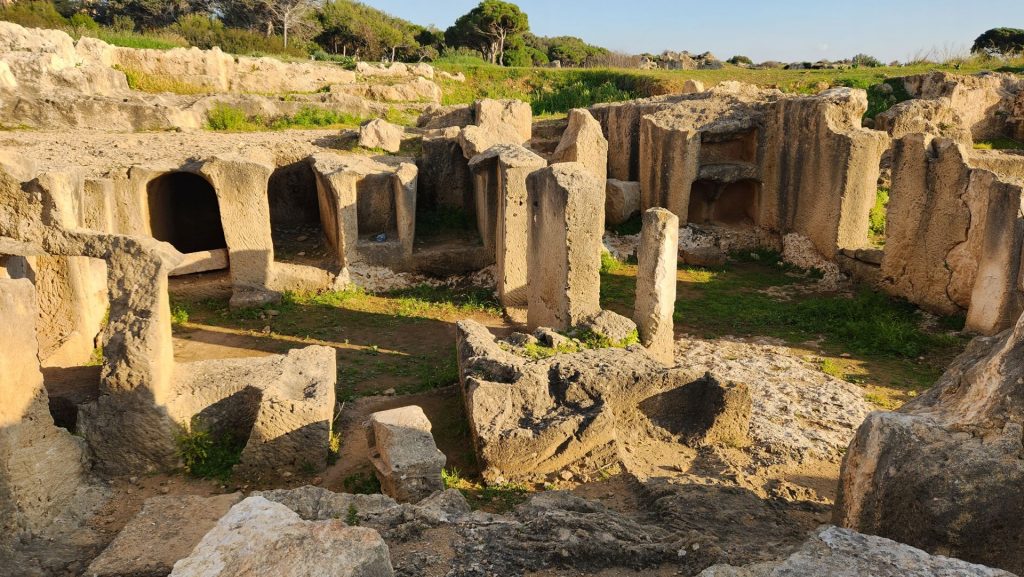
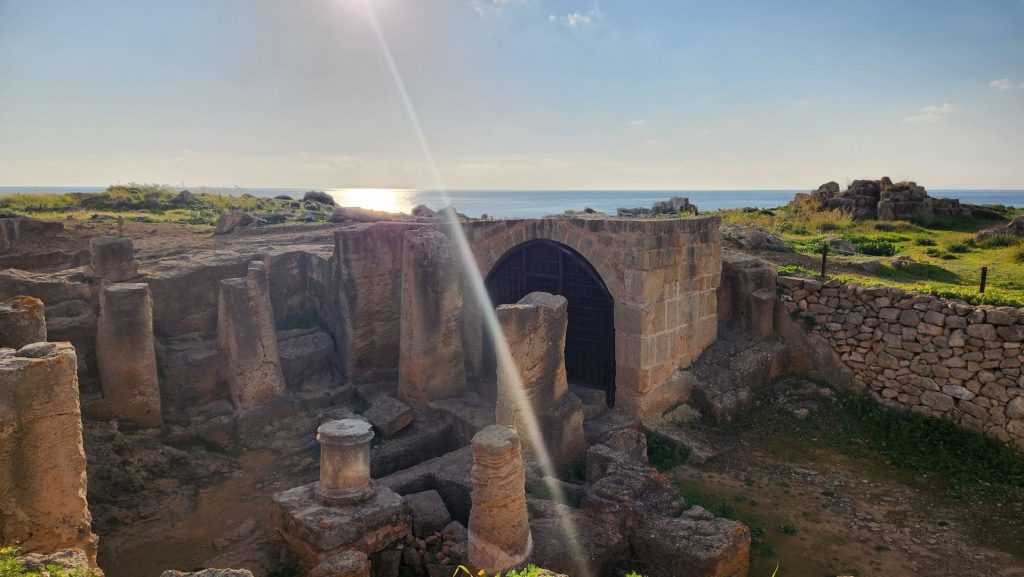
Tomb 7 is also known as “Palioekklisia” because it was converted into a church. You can see the remains of the plaster in this tomb. Various niches and ossuaries are hewn out of the sides of the dromos. The ossuaries, of course, were used to keep bones when the tombs were reused.
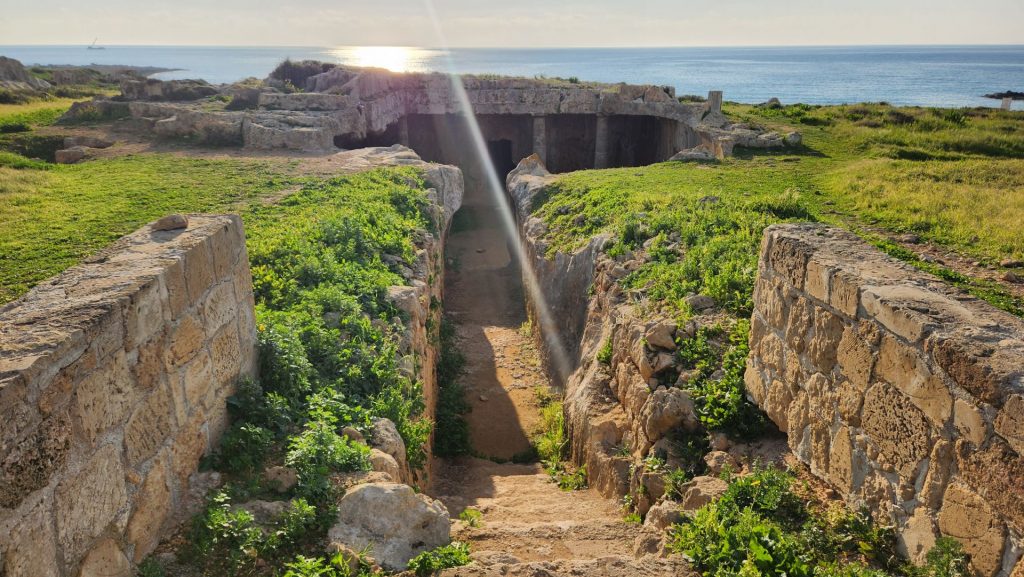
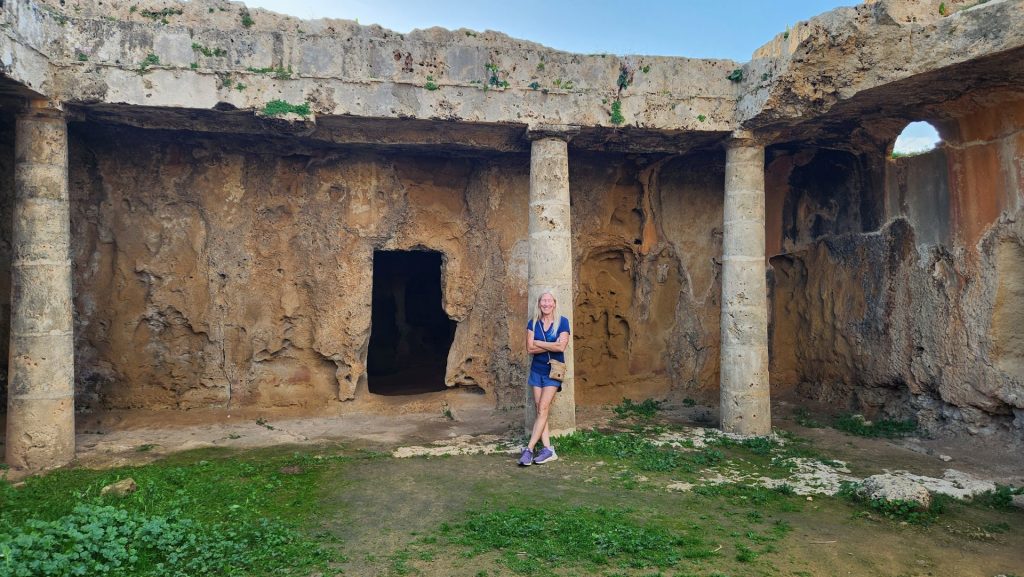
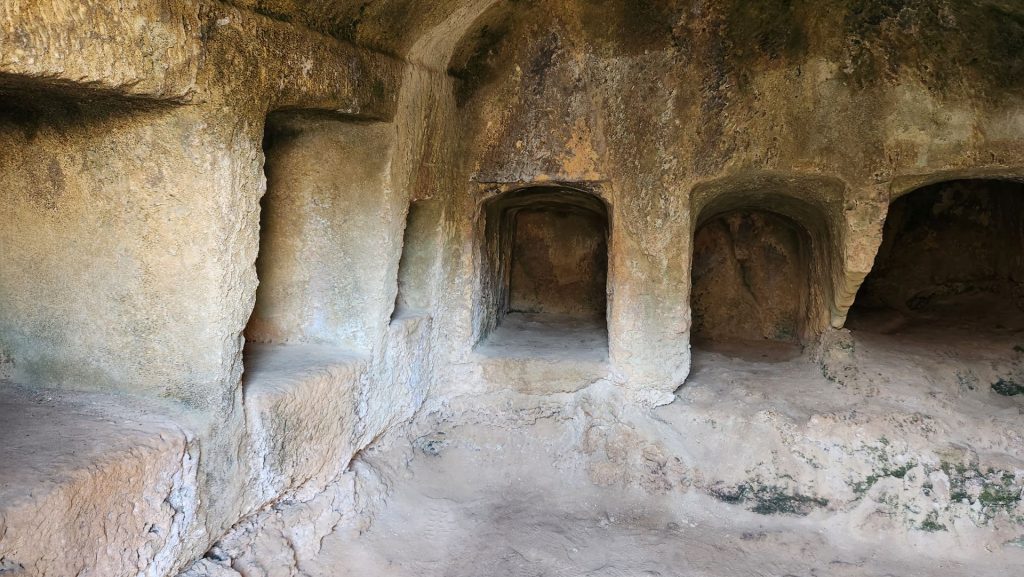
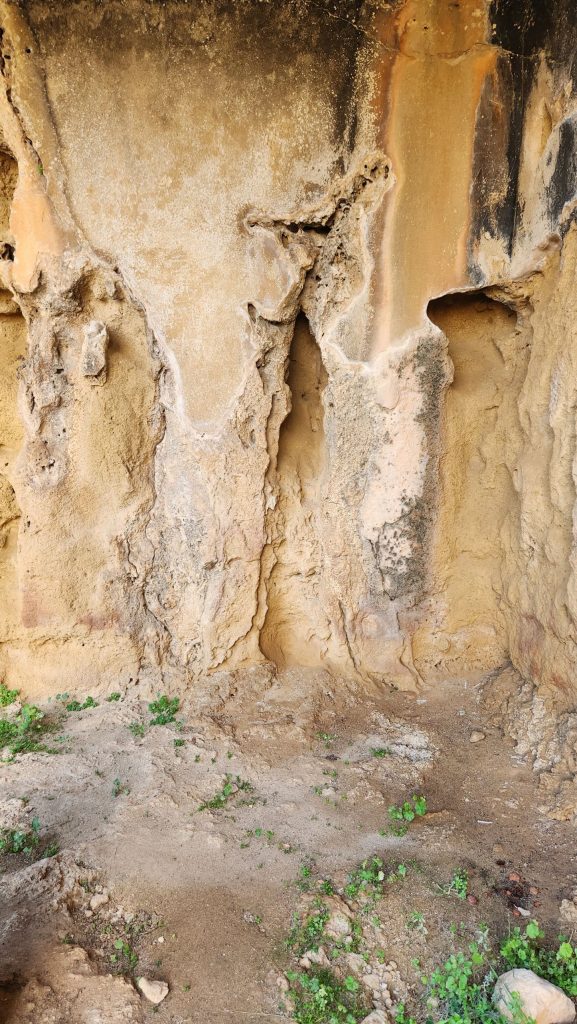
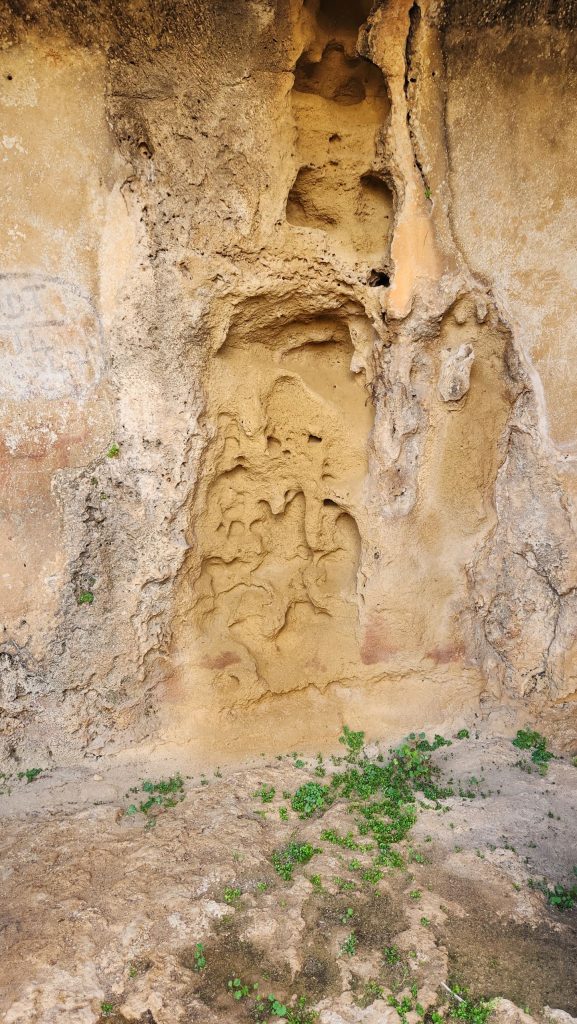
I am not sure if this is rock or some other substance, but we passed these beautiful flowers growing out of it on our way to Tomb 8. I had to take a picture.
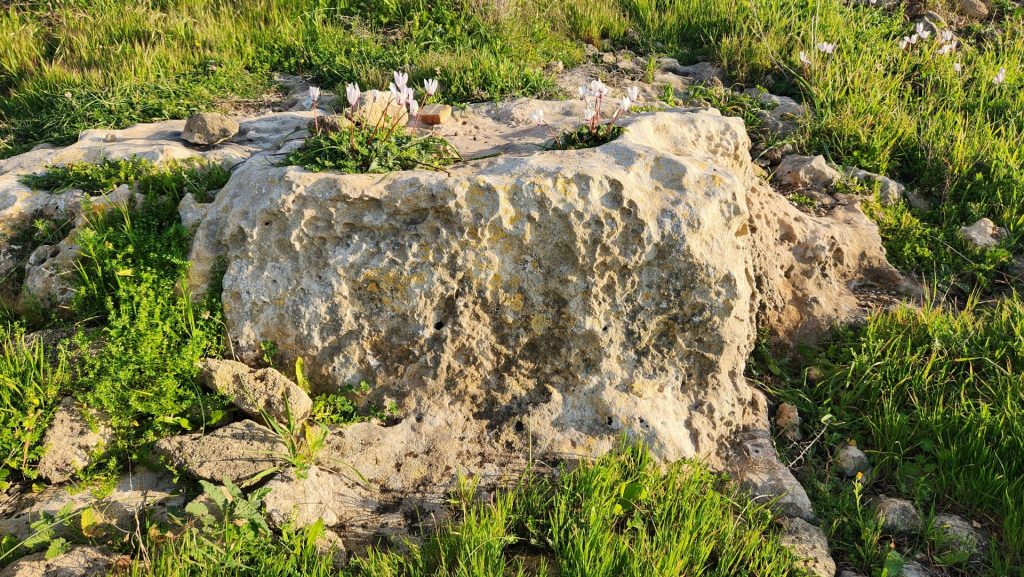
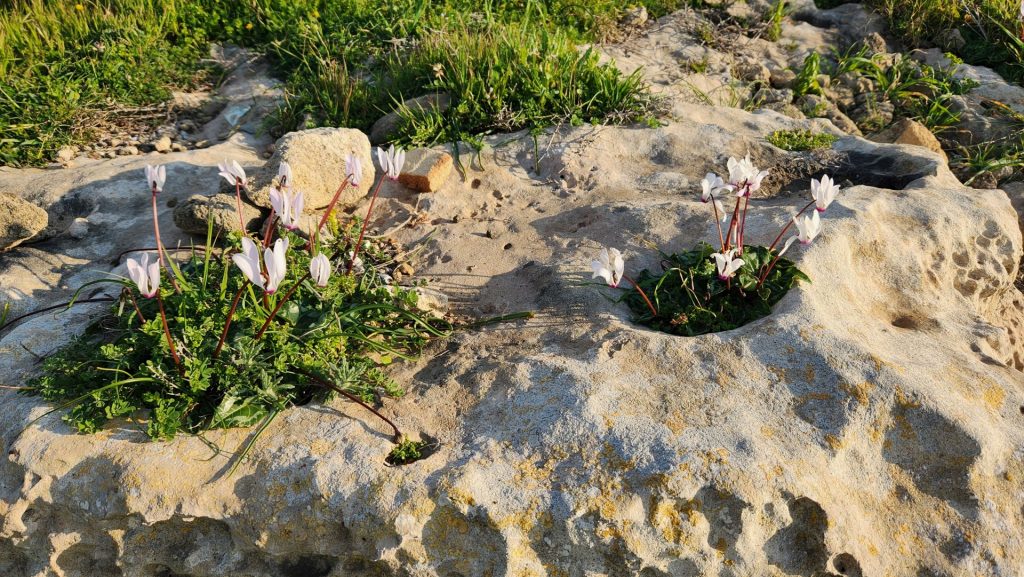
Tomb 8 is quite different from the other tombs. Rather than having an atrium, the middle is a rock surrounded by four wings.
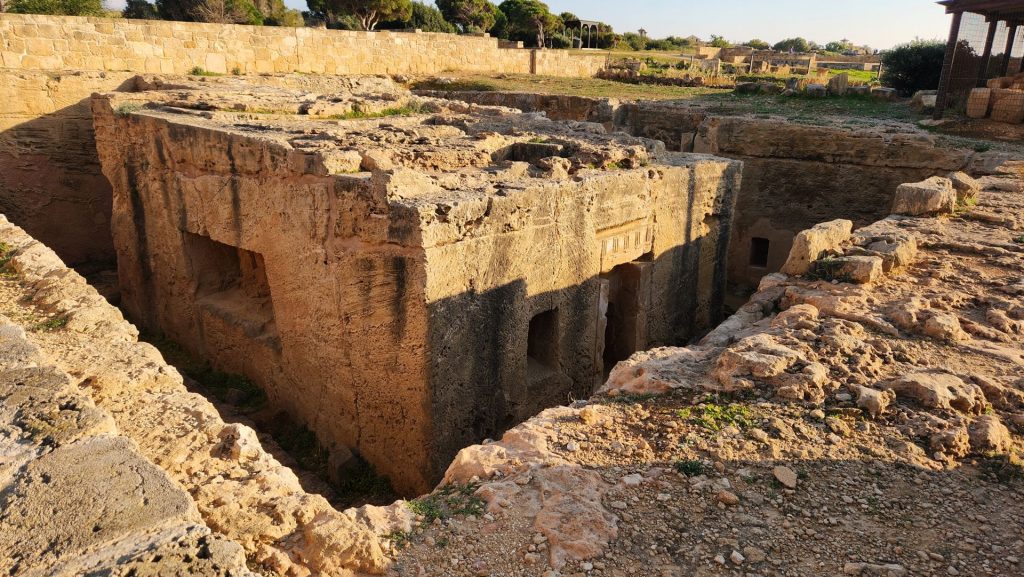
Many colorful architectural fragments were discovered in this tomb. To the left at the bottom of the dromos is the place of the central burial. Two pillars carved out of the rock support the Dorian entablature (the metopes and triglyphs).
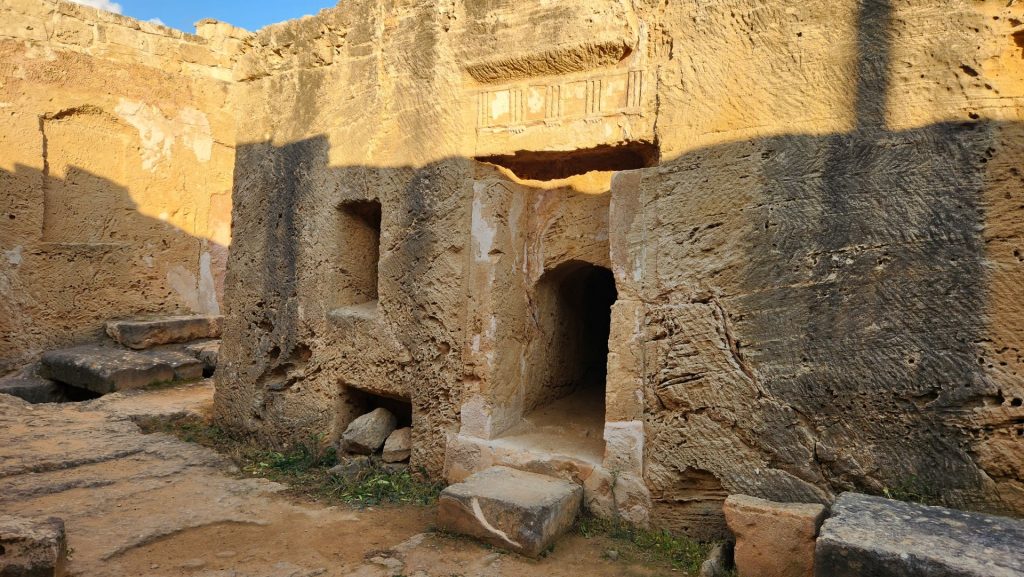
Two architectural fragments were found in front of this burial niche: two limestone statues of birds, most probably two eagles. Due to this, it is thought that in this tomb the body of a king of the dynasty of Ptolemies who died in Cyprus is interred. If so, then this was probably the site of burial of Ptolemy the brother of Cleopatra VI. On the other hand, if the statues depict falcons instead of eagles, then it is possible that this is the depiction of god Oros. God Oros, an Egyptian deity, was a solar god (we heard his name and saw his symbol a lot when we were in Egypt) that was identified with Apollo and depicted as a falcon or a person with the head of a falcon. Oros is also the god that takes souls to the underworld. In either case, it seems that a VIP was buried here.
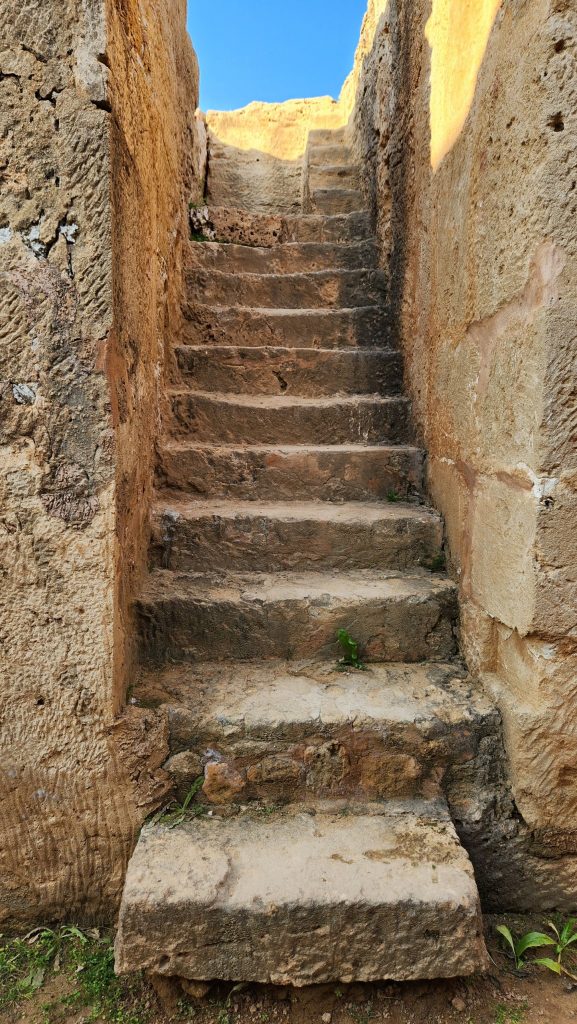
I don’t know why the stairs are cut in half (more like only a third of a stairway) up top.
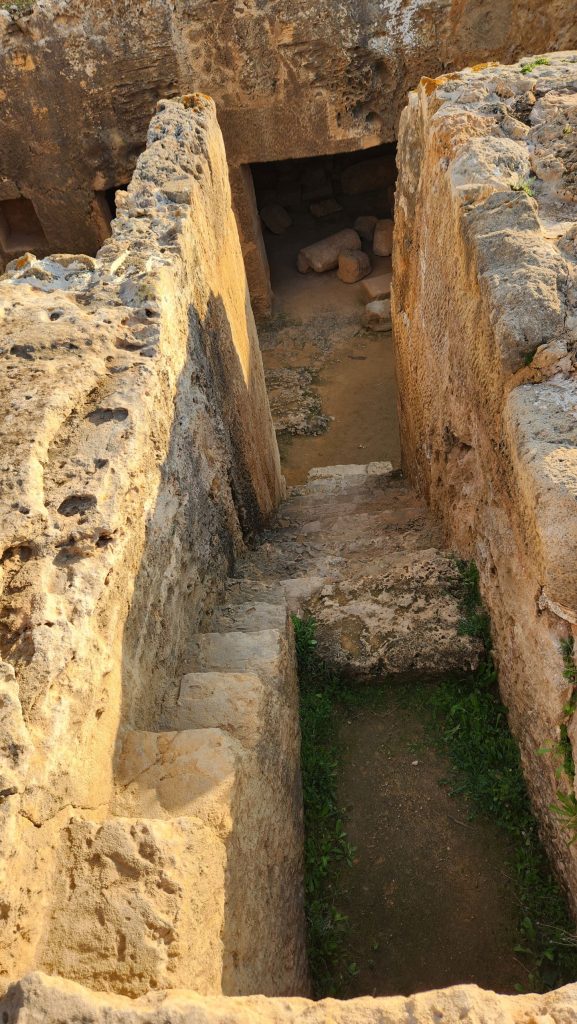
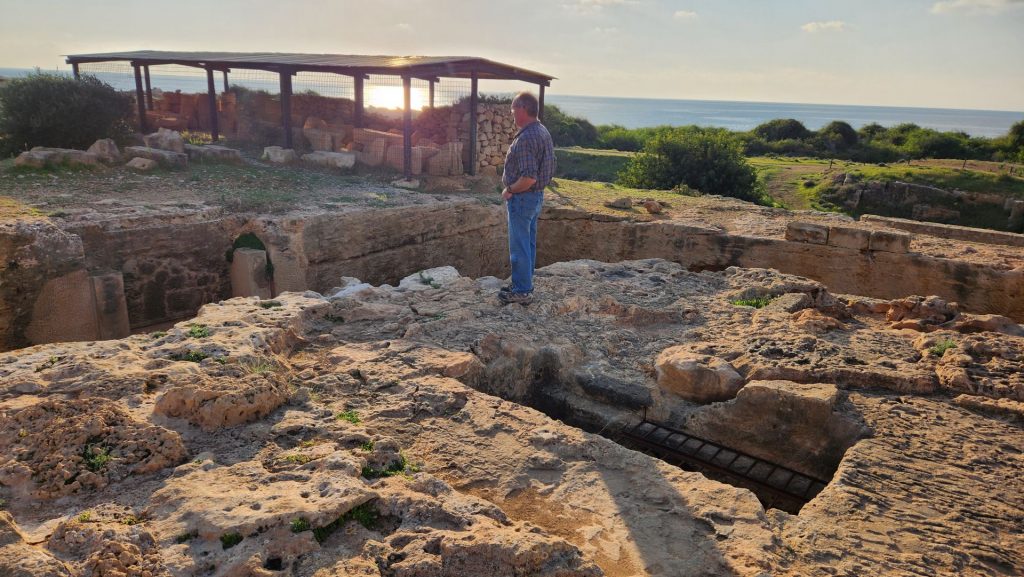
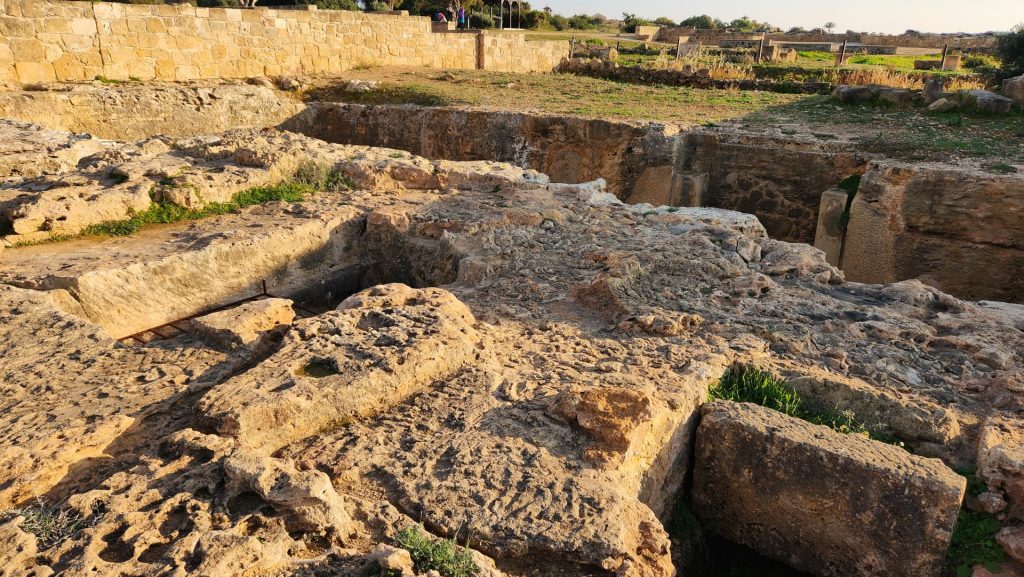
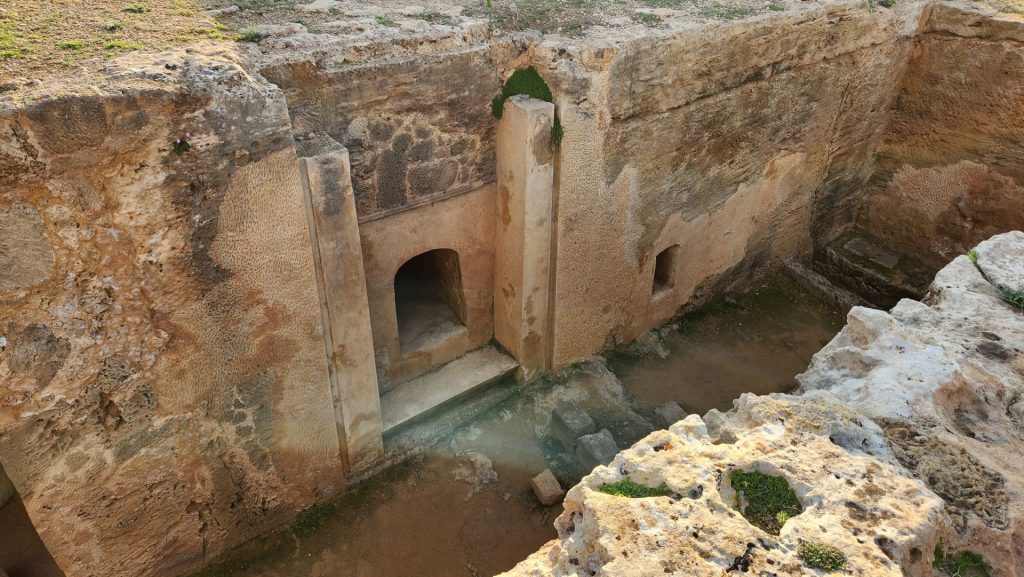
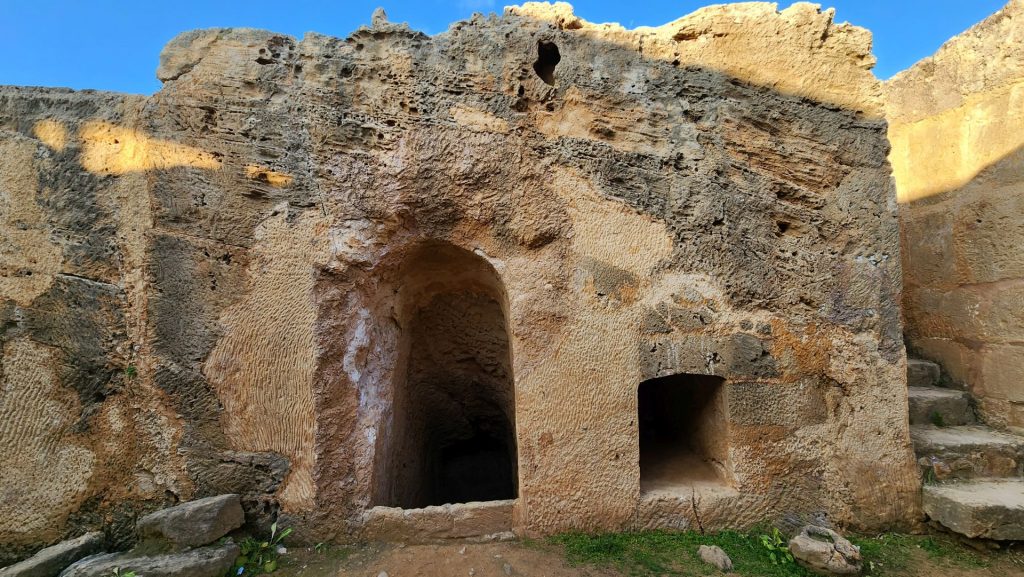
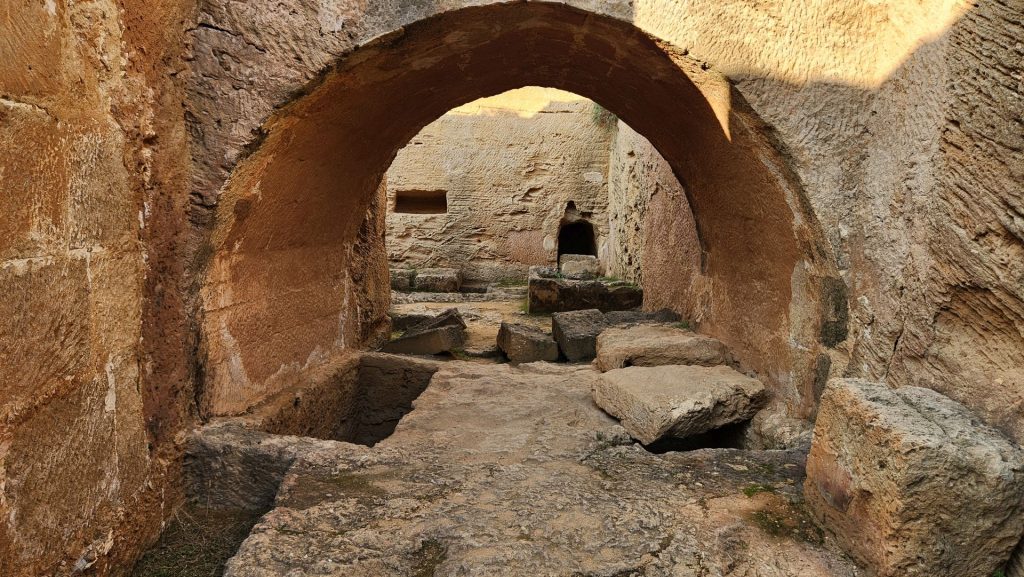
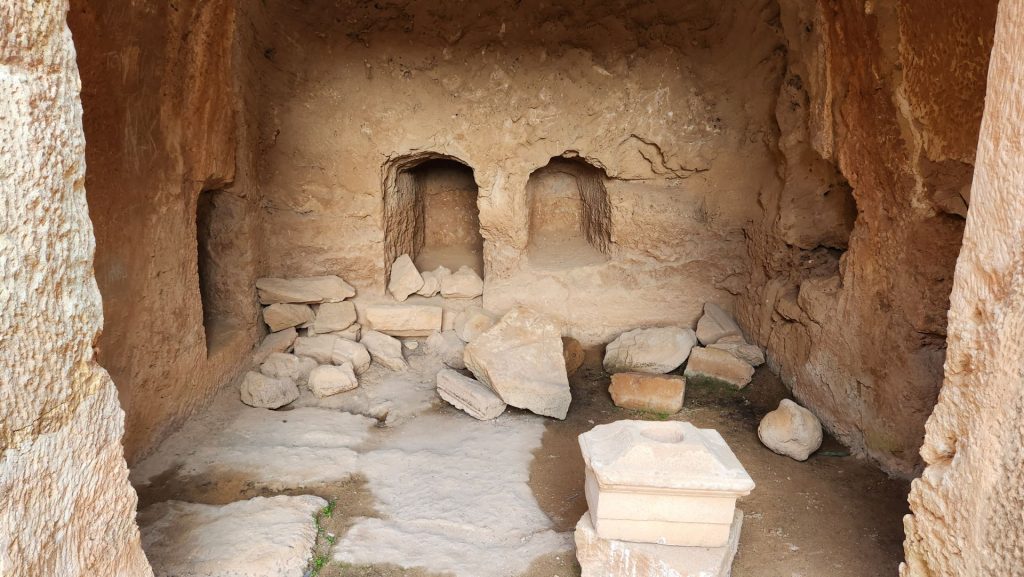
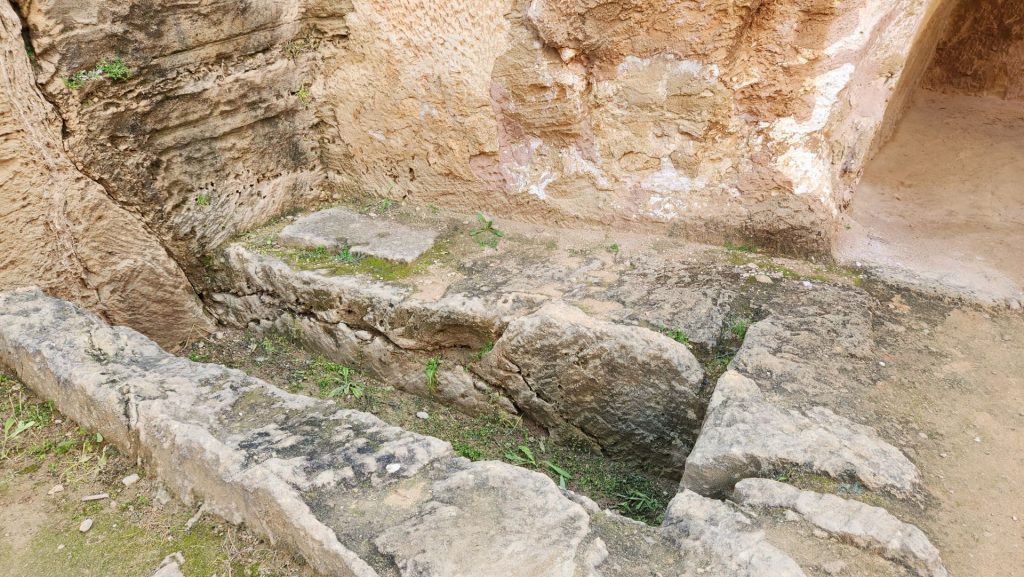
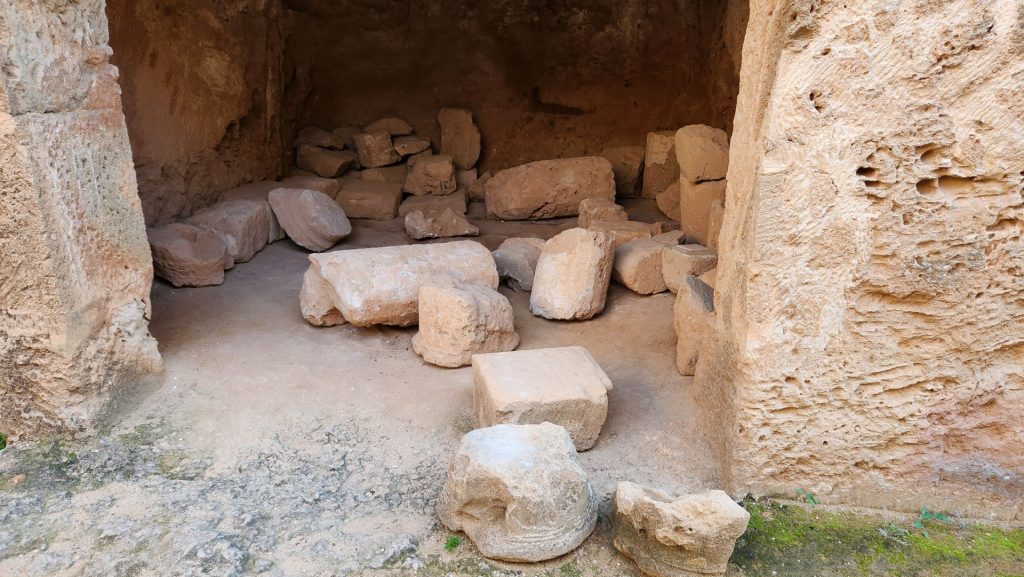
The sun was getting low in the sky so we headed to the hotel. We walked a short distance to one of the few open restaurants (most are closed for the winter) for a seafood dinner.
